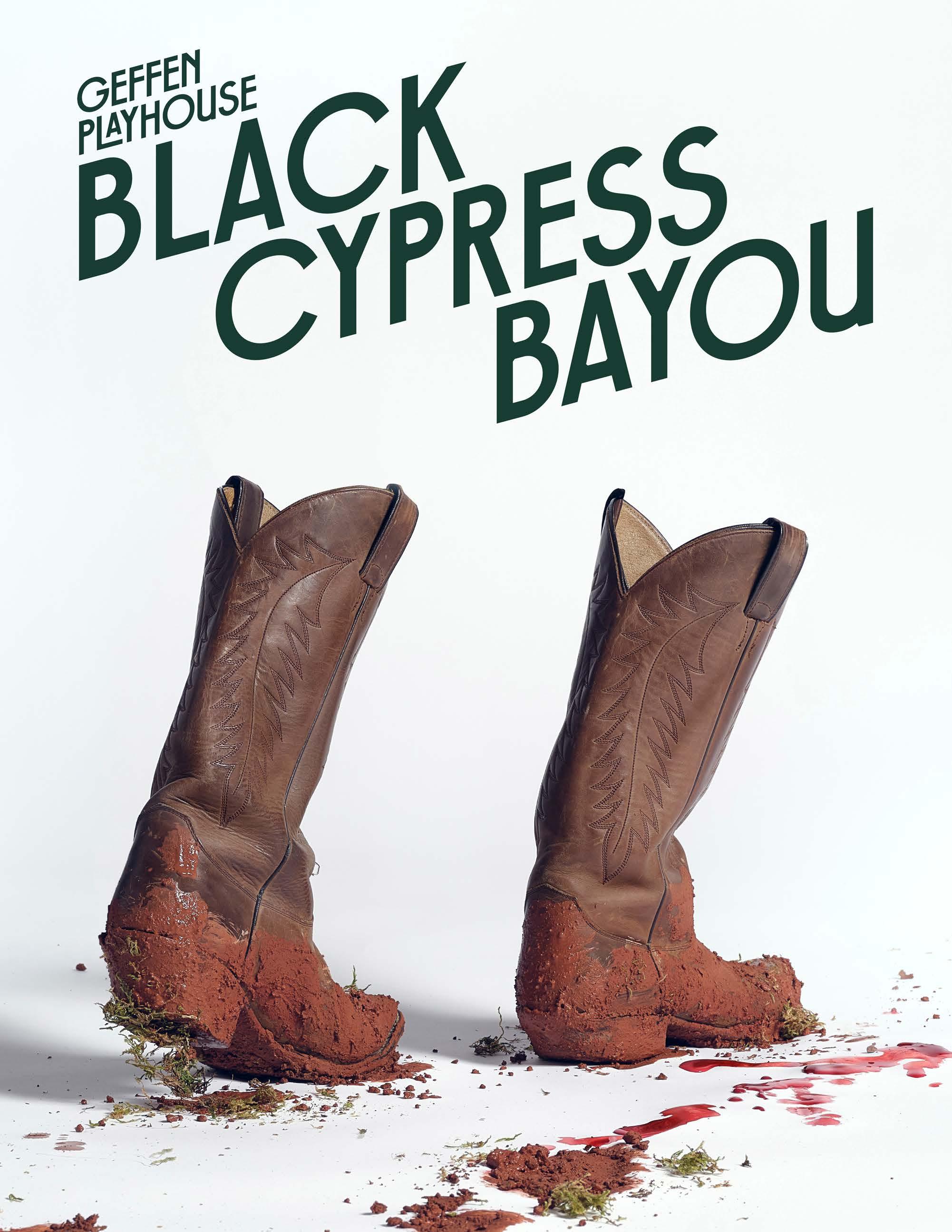
STUDY GUIDE: SPECIAL EDITION
“... For my people everywhere singing their slave songs repeatedly: their dirges and their ditties and their blues and jubilees, praying their prayers nightly to an unknown god, bending their knees humbly to an unseen power;
For my people lending their strength to the years, to the gone years and the now years and the maybe years, washing ironing cooking scrubbing sewing mending hoeing plowing diggng planting pruning patching dragging along never gaining never reaping never knowing and never understanding;
Let a new earth rise.
Let another world be born.
Let a bloody peace be written in the sky.
Let a second generation full of courage issue forth; let a people loving freedom come to growth.
Let a beauty full of healing and a strength of final clenching be the pulsing in our spirits and our blood.
Let the martial songs be written, let the dirges disappear.
Let a race of men now rise and take control.”
Excerpts from “For My People”
By Margaret Walker
WORLD PREMIERE
BLACK CYPRESS BAYOU
02.10–03.17.2024
AUDREY SKIRBALL KENIS THEATER
This guide is to be used for educational purposes only.
SPECIAL THANKS TO
Brian Dunning, Kristen Adele Calhoun, Lindsay A. Jenkins, Abhi Shrestha, The Steppenwolf Education Department & Brian Allman
STUDY GUIDE CURATED BY
Mark J. Chaitin & Aja Houston
COVER PHOTO BY
Justin Bettman STAFF
Tarell Alvin McCraney- Artistic Director
Gil Cates Jr. - Executive Director
Amy Levinson- Associate Artistic Director
Brian Allman- Director of Education & Community Engagement
Mark J. Chaitin- Manager of Education & Community Engagement
Paloma Nozicka- Education Associate
GEFFEN PLAYHOUSE TEACHING ARTISTS
Sean Michael Boozer, DeJuan Christopher, Paris Crayton III, Lyssa Deehan, Sidney Edwards, Ryan Hallahan, Aja Houston, Bethany Koulias, BJ Lange, Tiffany Oglesby, Tara Ricasa, Gerry Tonella, Maddy Wager

AMERICAN SIGN LANGUAGE INTERPRETED PERFORMANCE
Sunday, March 3 at 2:00 pm- an ASL interpreter will be present in the Audrey Skirball Kenis Theater.

SMOKE-FREE PERFORMANCE
Sunday, February 25, 2024, a smoke-free performance for patrons with smoke sensitivities.

3
BAYOU WELCOME TO THE Y’ALL!
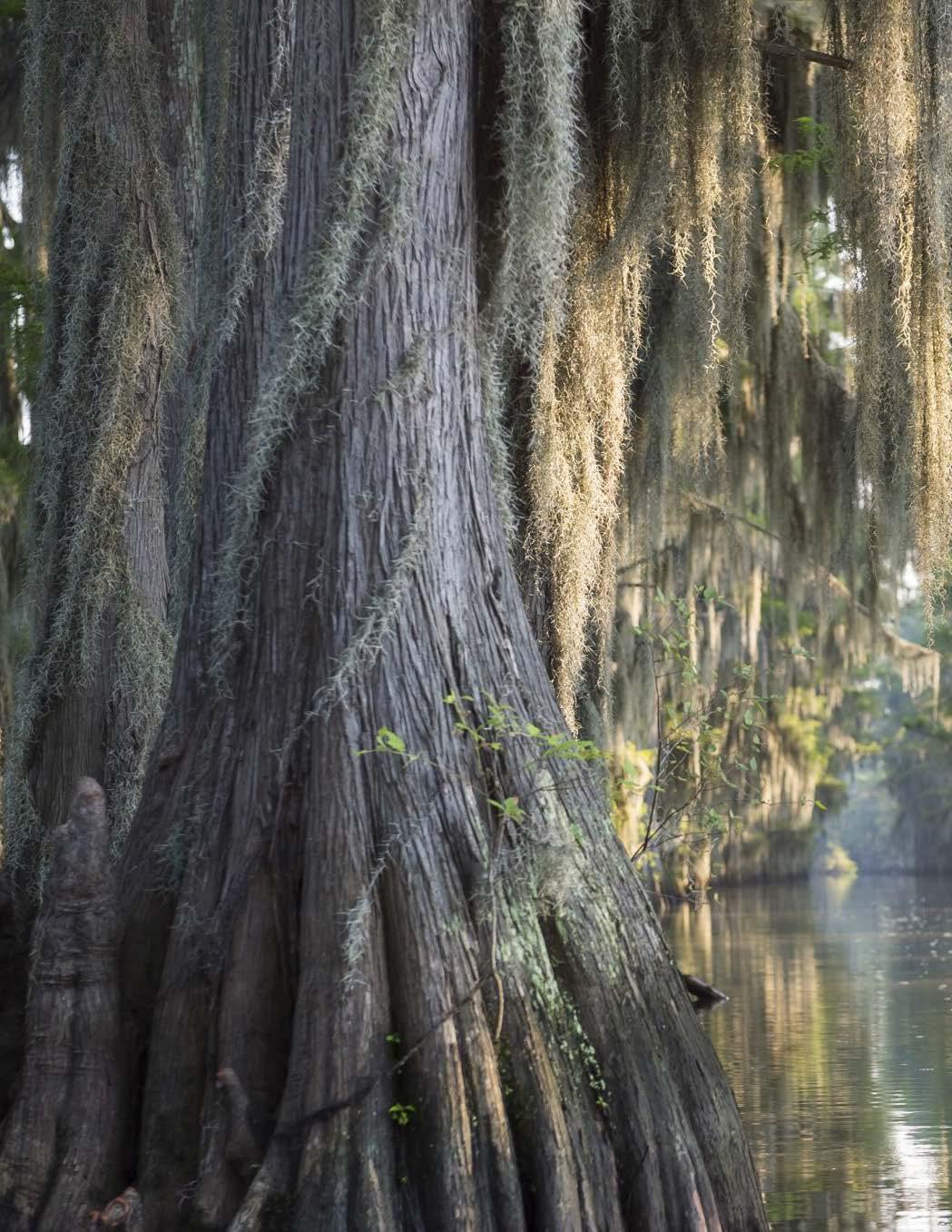
4
BAYOU Y’ALL!
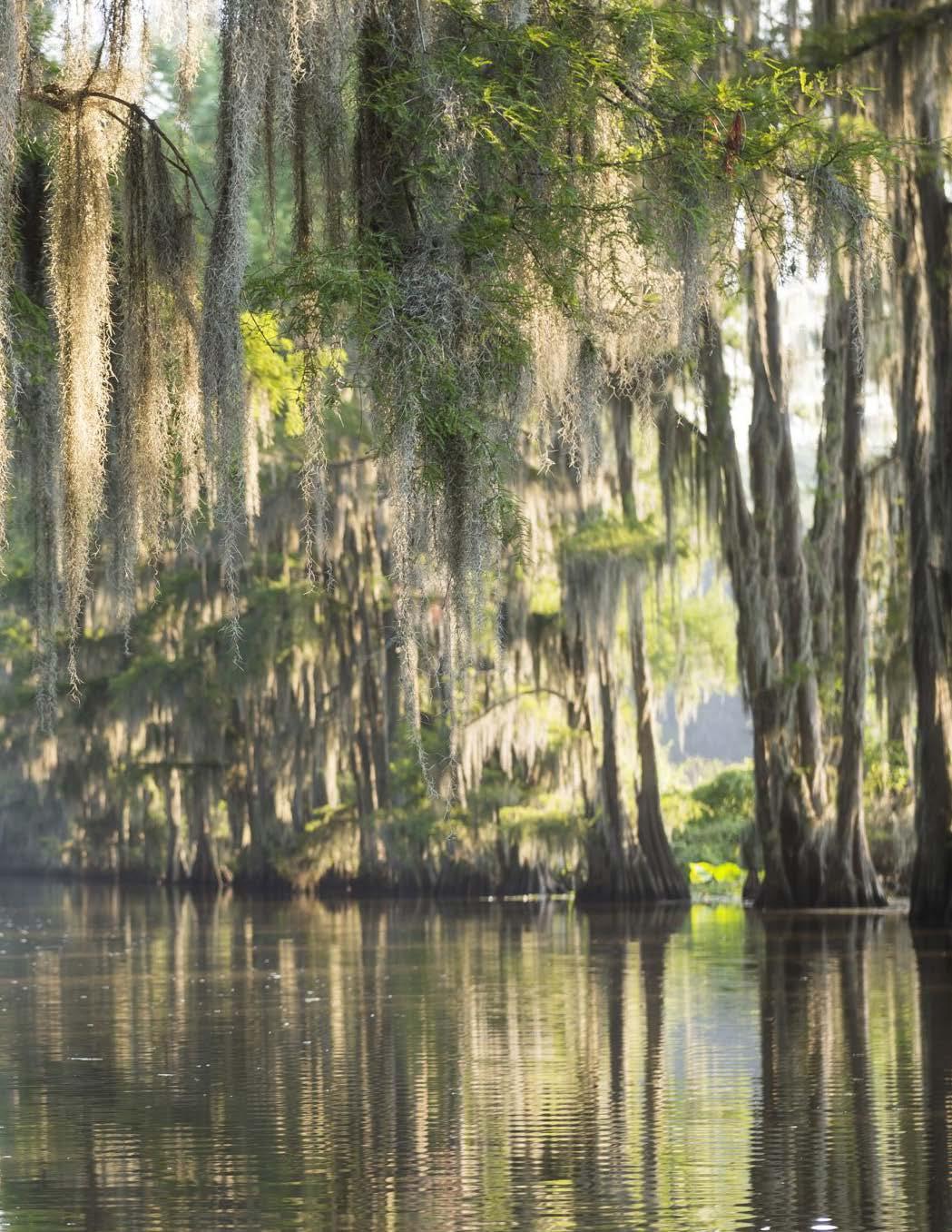
5
BAYOU, SOUTHERN UNITED STATES PHOTO: ADOBE STOCK
6 TABLE OF CONTENTS ABOUT THIS PRODUCTION NOTE FROM THE PLAYWRIGHT ................................................................................ 7 PRODUCTION & CAST CREDITS ............................................................................. 8 PLAY SYNOPSIS & ARTISTIC BIOS........................................................................... 9 THEMES & TOPICS THE MANIFOLD FAMILY ..................................................................................10-11 CAN I GET A WITNESS?: NOTE FROM THE DRAMATURG.............................................. 12 ORAL HISTORY & STORYTELLING ........................................................................ 13 ALL MANNER OF SOUTHERN TERRORS .........................................................18-19 RITUALS FOR PROTECTION & HEALING .............................................................. 21 THE TRADITION OF THE SPIRITUAL ....................................................................... 22 THE CADDO LANGUAGE TODAY ...................................................................24-26 POST SHOW DISCUSSION ................................................................................... 30 ADDITIONAL RESOURCES .................................................................................... 30 ACTIVITIES ACTIVITY: COLLECTING OUR STORIES ........................................................15-17 ACTIVITY: DESIGN A COSTUME ....................................................................27-28 UPDATED AS OF APRIL 3RD, 2024
NOTE FROM PLAYWRIGHT
KRISTEN ADELE CALHOUN
LIKE THE CHURCH FOLK SAY-”YOU COULD HAVE BEEN ANYWHERE IN THE WORLD TODAY BUT YOU CHOSE TO BE HERE.” And for that, we give thanks! Welcome to the Bayou.
I started writing this play in April 2020 when, like many people, I was consumed with the questions of:
• What must change for humanity to thrive?
• How do we co-conspire with nature for the good of the planet?
• What ancestral practices can we reclaim in the name of healing?
I trace my roots at least seven generations back (on both sides) to Deep East Texas.
We are of red clay, big sky, an illogical hope in better days, and the audacity to bring those days to bear. I am grateful to the people of this place-like my paternal grandparents, R.L. and Octeria Calhoun-for showing me that all of our survival is connected. I am grateful to the communities of care they created in the midst of unthinkable horrors. I am grateful for the shout, the rocking chair, the wail, the altar call, the belly laugh, the garden and all the tools they passed down with no name but deep power.
I hope you feel some of that power in this play. Here in this sacred space we call the theater, I honor the genius and generosity of the Black South and strive to be in conversation with the works of Dr. Barbara Ann Teer, Israel Hicks, Jeffrey Nickelson, Ebony Noelle Golden, Shay Wafer, Lorraine Hansberry, Dr. Ron Himes, vickie washington, Woodie King Jr., Tarell Alvin McCraney, Eric Lockley, Belynda M’Baye, Lynn Nottage, Lynda Gravatt, Katori Hall, Tricia Hersey, August Wilson, Dominique Morisseau, Jenny Koons, Nikki Vera, Marcus Gardley, Jonathan McCrory, Sade Lythcott, York Walker, Princeton James, Roberta Uno, Michael Thomas Walker, Rodney Hicks, Marshall Jones IlI, Cajardo Lindsey and all collaborators past, present and future who believe in the transforming power of the stage.
And while this play is hyperspecific to a culture and region, I hope no matter where you’re from it touches something familiar and unearths healing for you too.
If at any point during our time together, you should feel a quickening in your spirit— let it out. I invite you to laugh loud, cut up, carry on and let us know how you feel. Thank you again for being in our number.
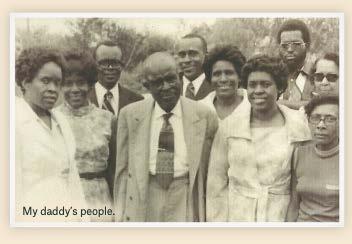
7
ABOUT THIS PRODUCTION
ABOUT THIS PRODUCTION
BLACK CYPRESS BAYOU
WRITTEN BY
KRISTEN ADELE CALHOURN
SCENIC DESIGNER
LAWRENCE E. MOTEN III
LIGHTING DESIGNER
DONNY JACKSON
ASSOCIATE DIRECTOR
VELANIE DIBBA
DIRECTED BY TIFFANY NICHOLE GREENE
SOUND DESIGN & MUSIC BY EVERETT ELTON BRADMAN
COSTUME DESIGNER MYLETTE NORA
ADDITIONAL SOUND DEISGN BY FAN ZHANG
PRODUCTION STAGE MANAGERS
GABRIELLE J. BRUNO, CLARA KING & KESIA ROSS
CASTING DIRECTOR
PHYLLIS SCHURINGA‚ CSA
CAST

AMBER CHARDAE ROBINSON
TAYSHA HUNTER

BRANDEE EVANS
LADYBIRD MAINFOLD


ANGELA LEWIS RAEMEKA
MANIFOLD-BALER

DRAMATURG LINDSAY A. JENKINS AKILAH
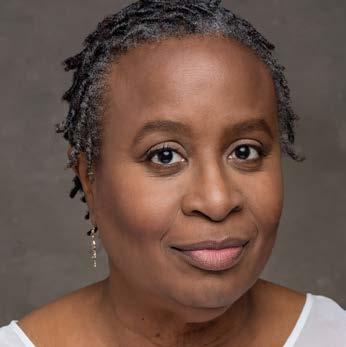
KIMBERLY SCOTT
VERNITA MANIFOLD

8
WALKER U/S LADYBIRD / RAEMEKA ASIA MARTIN U/S RAEMEKA / TAYSHA INGER TUDOR U/S VERNITA
A.
ABOUT THE PLAY
SETTING: Deep in East Texas, 2020.
RUNNING TIME: 80 minutes, no intermission.
AGE RECOMMENDATION: 12+
WARNINGS: Herbal Cigarette Smoke • Strobe Lighting Effects • Theatrical Haze
CONTENT ADVISORY: This production contains prop firearms and profanity.
A NOTE FROM THE PLAYWRIGHT: We never see the town, but the Manifold women live in Lodi, Texas or a community like it. Think of the smallest country village you can imagine- then think smaller. A poorly stocked general store that’s going out of business. A slaughterhouse and beef processing plant that’s shutting down too. No stoplight. A few churches holding on. A Black cemetary. A white cemetary. A post office. The closest grocery store is a 30 minute drive past the bayou. The hospital is a good hour drive in the other direction. This is a segregated community that lives close to the land and relies deeply on the neighbors they trust. Everyone carries a gun because sometimes the only meat you eat is the meat you kill. And you never know when you will have to protect your life from a wide array of potential dangers.
Old Black folks from Lodi will tell you that “this part of Texas had the record in lynchings well into the 1970s.” The last recorded lynching of a Black man was in May, 2001.
ARTISTIC BIOGRAPHIES

KRISTEN ADELE CALHOUN Playwright (she/her)
Kristen Adele Calhoun is a writer, actor, producer, and curator. Her playwriting commissions include Penumbra Theatre, Lucille Lortel Theatre, the NAACP, St. Louis Black Repertory Company, 651 ARTS, and the Black American West Museum. Other plays include WILDCAT, blood work, Out the Mud, and Canfield Drive. She is the co-curator of BLKSPACE, a two-week, rest-centered residency for Black artists and is currently an I AM SOUL Playwriting Resident at Dr. Barbara Ann Teer’s National Black Theatre. Her film and television writing credits include: HBO’s adaptation of Toni Morrison’s novel SULA helmed by showrunner Shannon M. Houston and Stephanie Allain’s Homegrown Pictures, and BLKNWS directed by Kahlil Joseph, produced by A24 and Participant. Kristen’s television and film acting credits include: House of Cards, Orange Is the New Black, Elementary, Blue Bloods, The Good Wife, Everything I Whispered to Dorothy and The Astronaut Who Lost His Helmet. A native of Dallas, Texas, she is a graduate of the University of North Texas (Bachelor of Fine Arts) and the Mason Gross School of the Arts at Rutgers University (Master of Fine Arts). She splits her time between Ghana, Mexico, and the United States of America. Instagram: @kristenadelecalhoun

TIFFANY NICHOLE GREEN Director (she/her)
Tiffany Nichole Greene was the original resident director of Hamilton: An American Musical (Philip Tour). Her most recent credits include, York Walker’s Covenant at Roundabout Theatre Company; Jonathan Larson’s Rent at Oregon Shakespeare Festival; Steph Del Rosso’s 53% Of at Second Stage Theater; Christina Ham’s Nina Simone: Four Women at Arizona Theatre Company; the world premiere of Vichet Chum’s High School Play: A Nostalgia Fest at the Alley Theatre; the world premiere of Invincible at The Wallis, featuring the music of Pat Benatar and Neil Giraldo; and Adrienne Kennedy’s Ohio State Murders for the Goodman Theatre’s LIVE series. During the pandemic, Tiffany directed the world premieres of Lydia R. Diamond’s whiterly negotiations and Lynn Nottage’s What Are The Things I Need To Remember for Theatre For One: Here We Are, produced by Octopus Theatricals (NYT Critic’s Pick). She is a Lincoln Center Directors Lab alum, a Soho Rep Directors Lab alum, and a proud member of SDC. She holds an M.F.A. from Brown University/Trinity Rep. www.tiffanynicholegreene.com
ABOUT THIS PRODUCTION 9

LADY BIRD MANIFOLD
35, African American, she/her
Devoted. Ain’t never lived nowhere but this little corner of the country. A rule follower until she’s not. Leads with her head. Loves a good book.
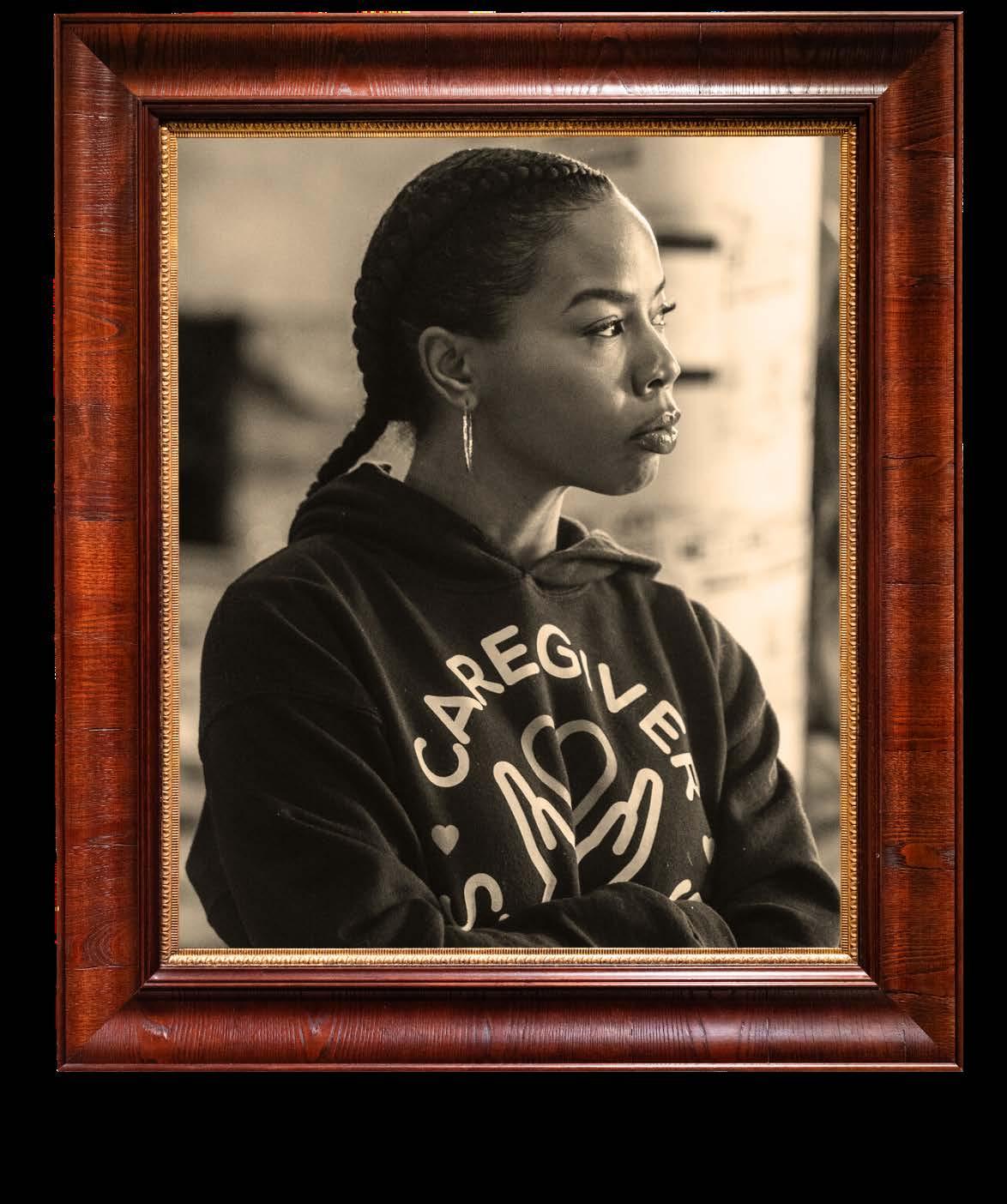
THE MANIFOLD FAMILY TREE
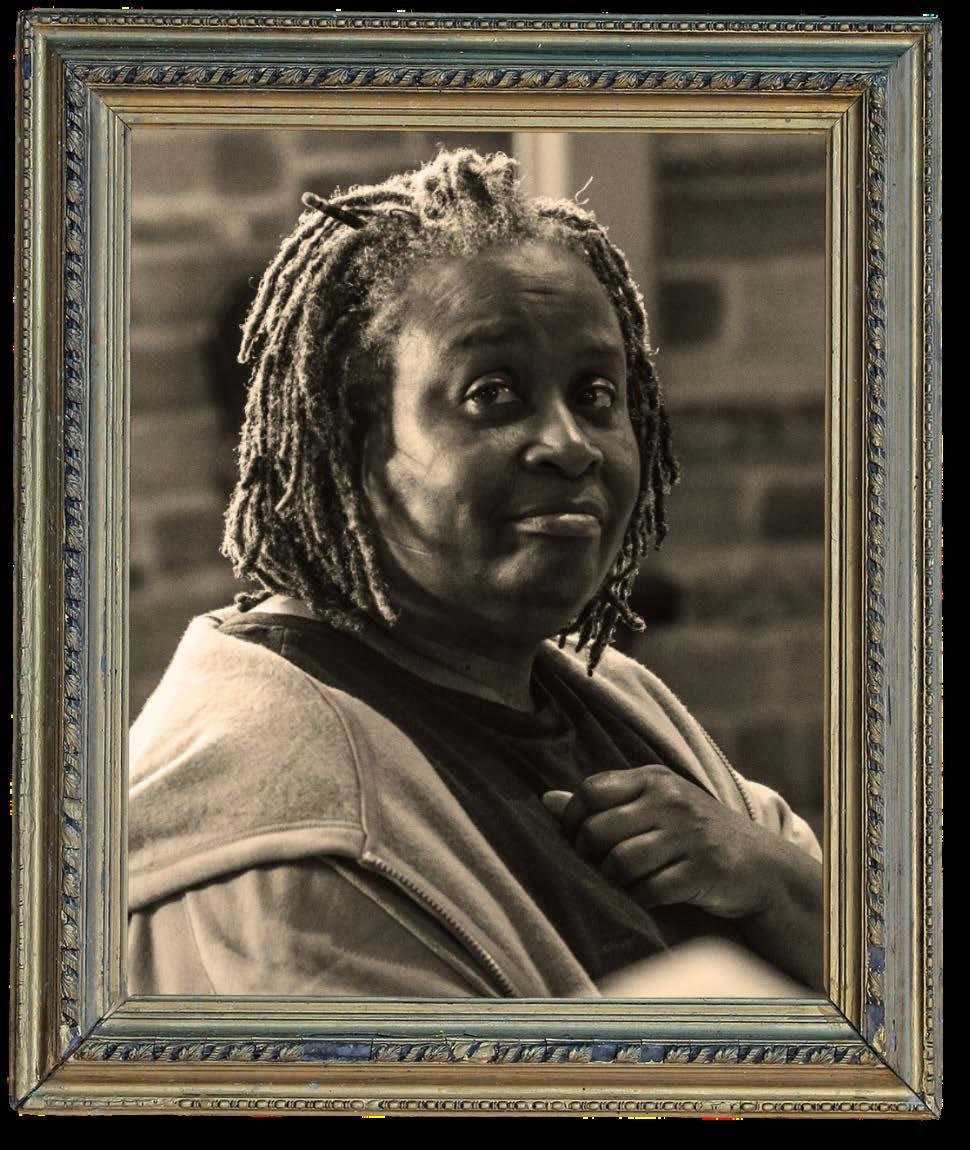
RAEMEKA
33, African American, she/her
The only one in the family that’s been on an airplane. A rule breaker. Leads with her heart. Closely connected to the healing powers of the land. A free spirit.

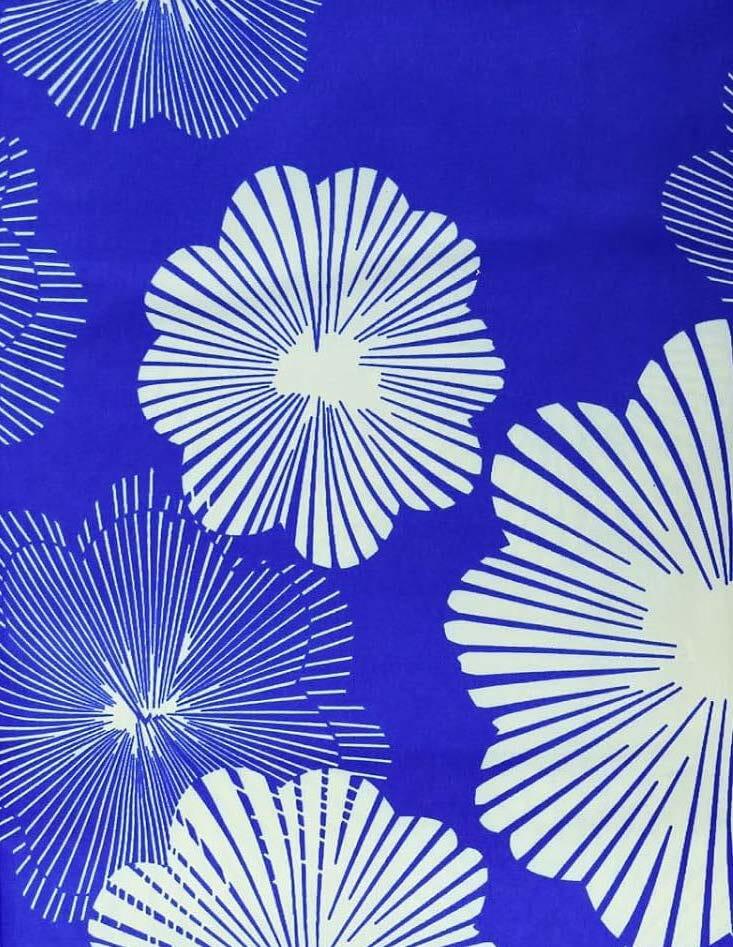
10
THEMES & TOPICS
“MEKA” MANIIFOLD-BALERba
THEIR KIN
MAMA ADA African American, she/her Ancestor.
VERNITA MANIFOLD
65, African American, she/her
A Texas woman through and through. Left home once but came right back. A rule bender. Leads with her gut. More ferocious than most people realize .
PAPA G African American, he/him Ancestor.
BIG MAMA African American, she/her
Vernita’s mother.
COUSIN NEEVA African American, she/her
Visited Vernita in a time of need.
UNCLE BOOGER African American, he/ him
Vernita’s brother, falsely imprisioned.
LIZ & KIDS 30s, African American, she/her LadyBird’s wife and children. Suffers from asthma.
JOHN “HOPPIN’ JOHN” BALER 30s, African American, he/him Meka’s husband. Works in cannabis.
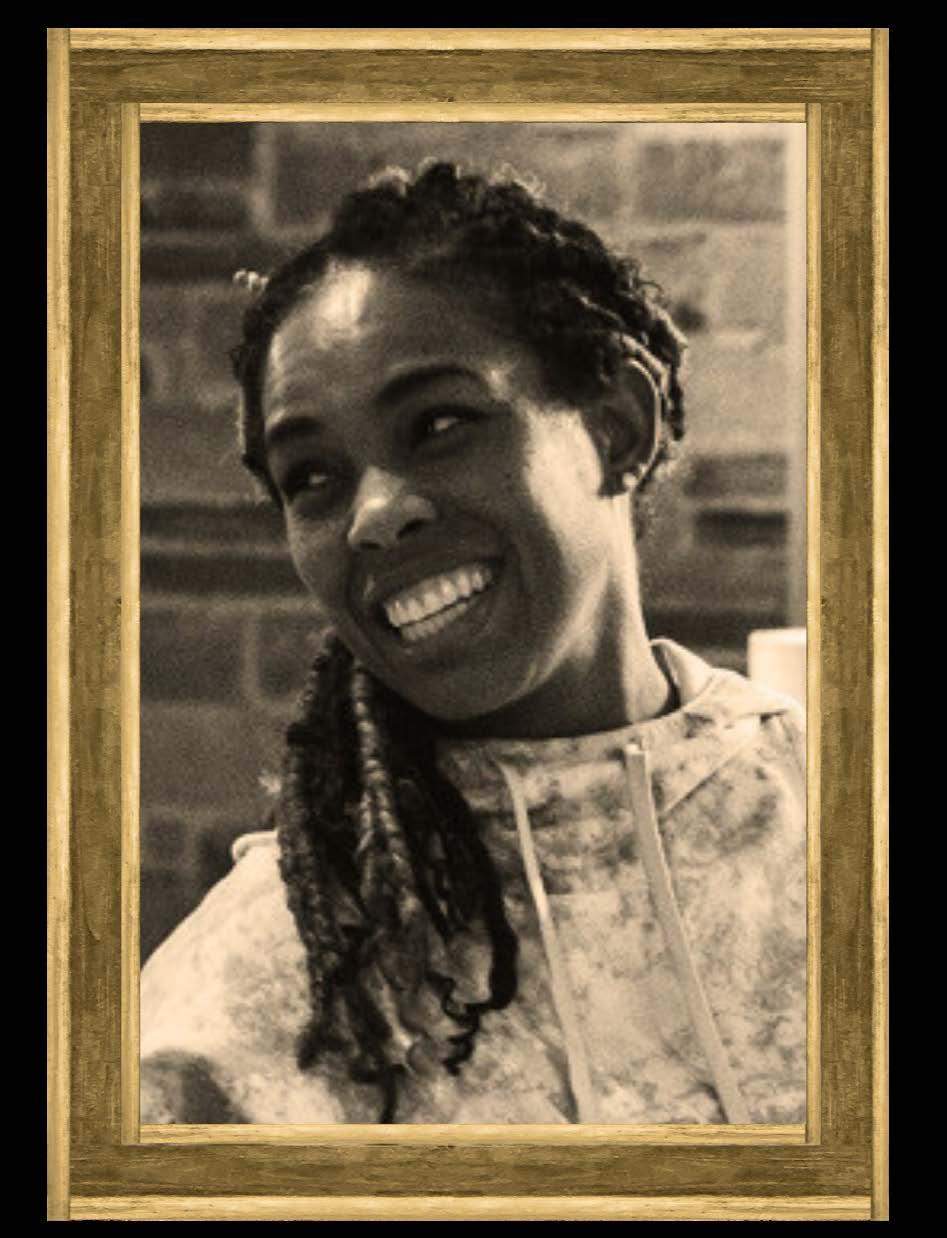

JOURNAL: Who are your ancestors? What does your family tree look like?
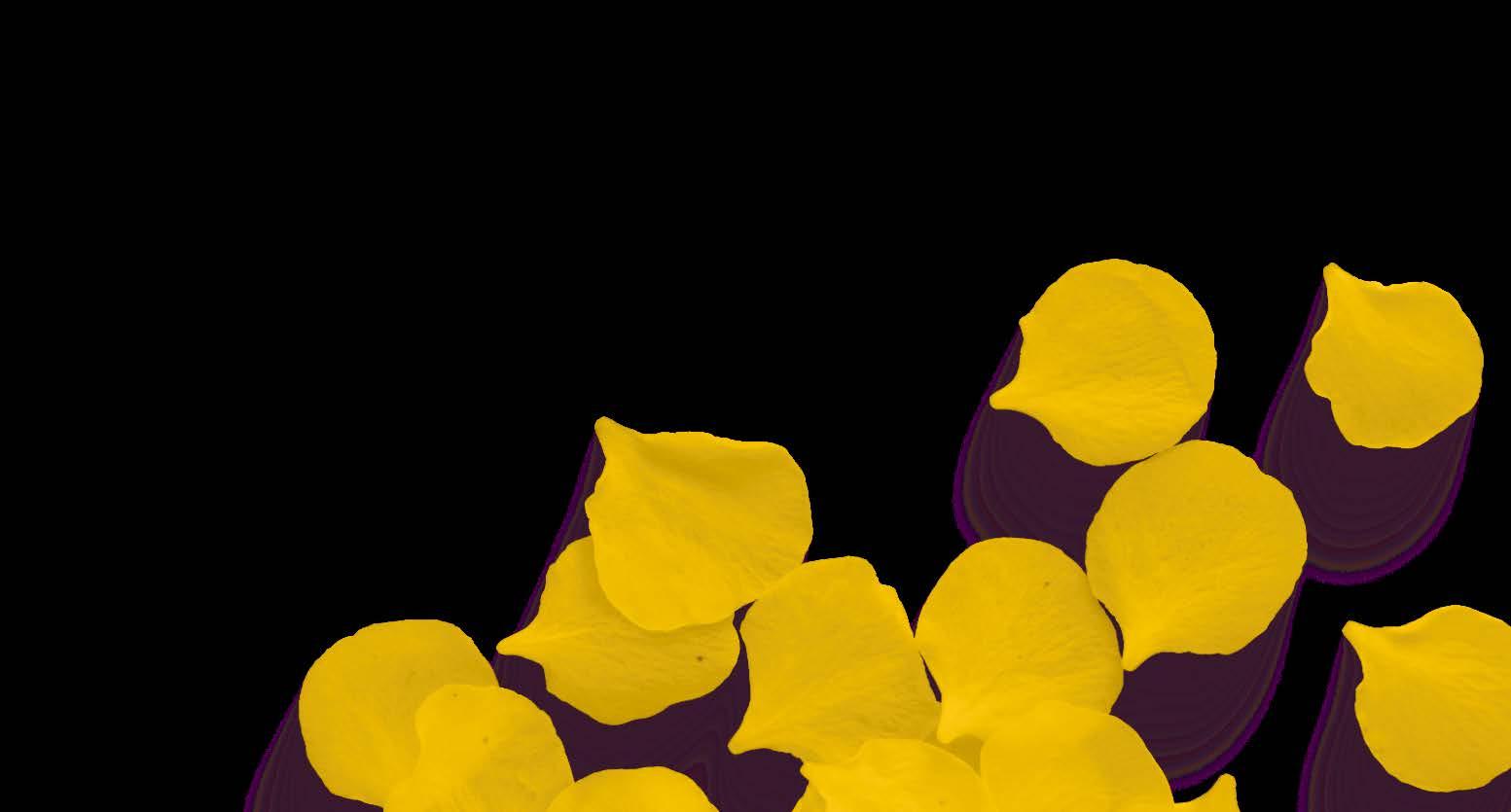
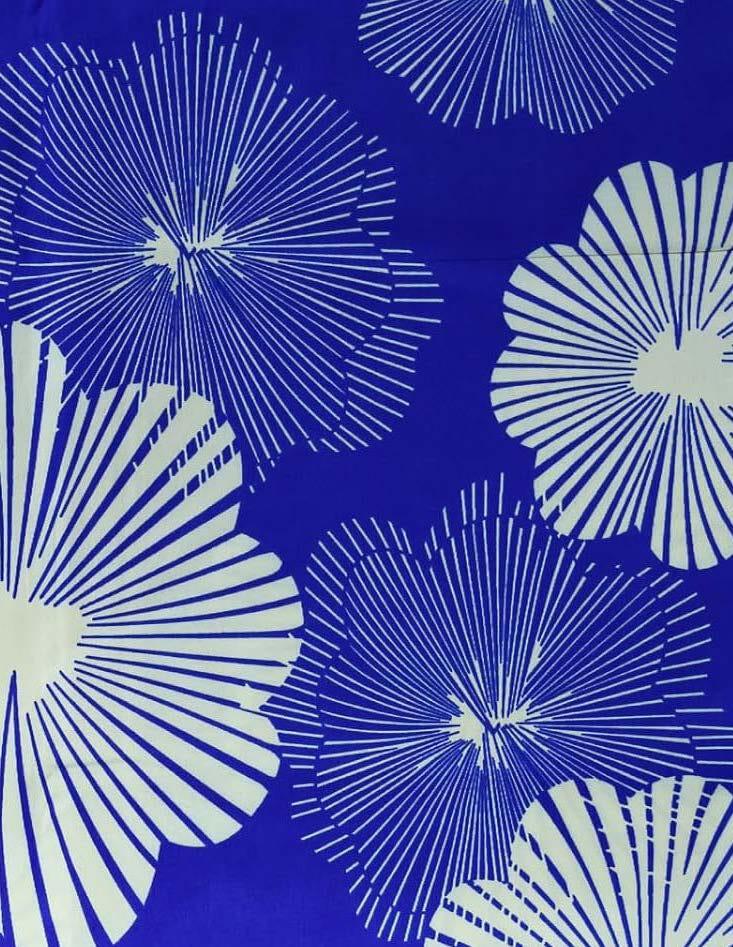
11 THEMES & TOPICS
CAN I GET A WITNESS?
BY LINDSAY A. JENKINS, DRAMATURG FOR BLACK CYPRESS BAYOU
In her book, Black Imagination, Natasha Marin offers “Seeing ourselves as whole and healthy is an act of pure rebellion in a world so titillated by our constant subjugation.” The creation of art in response to racial violence is a part of the legacy of Black theatremakers. For example, during the pandemics of lynchings and terror that spread across the U.S. in the early 1900s, it was playwrights such as Angelina Weld Grimké and Georgia Douglas Johnson who acknowledged the impact of this violence on the interior lives of Black women and Black families.
This act of seeing and being seen is an important aspect of performance that can lead to healing. And so, we take our role as audience members seriously as we come together for the collective witnessing of Black Cypress Bayou by Kristen Adele Calhoun.
Natasha Marin also observes that “witnessing is sacred work.” In honor of Marin’s beautifully sacred work, I offer you a ritual for witnessing this performance:
-Close your eyes. Take a breath. Think about the people who have come before you.
Did they have the luxury of leisure? Of free-time? Of disposable income? Bring them with you into the space. Say their names. During the show, if someone puts out a call, lean into the response.
-When the play ends, please fellowship. Linger in the lobby chatting. Touch and agree.
-Remember that ritual results in transformation. These transformations can look like:
• Closed to Open
• Hurt to Healed
• Denial to Acceptance
• Secrecy to Transparency
• Sadness to Joy
I leave you with this reflection from Alexis Pauline Gumbs from her soul-stirring book Undrowned: “What is the scale of breathing? You put your hand on your individual chest as it rises and falters all day. But is that the scale of breathing? You share air and chemical exchange with everyone in the room, everyone you pass by today. Is the scale of breathing within one species? All animals participate in this exchange of release for continued life. But not without the plants. The plants in their inverse process, release what we need, take what we give without being asked. And the planet, wrapped in ocean breathing, breathing into the sky. What is the scale of breathing? You are part of it now. You are not alone.”

SCAN THE QR CODE TO SEE THE RESEARCH (AND THE MEMES, AND THE VIDEOS) THAT SUPPORTED THIS BEAUTIFUL WORK.
THEMES & TOPICS 12
ORAL HISTORY & STORYTELLING
Many cultures and societies have an oral tradition of passing down stories about their collective history, life lessons, familial memories, and sacred religious rites from generation to generation. The tool of storytelling, the spoken word, is used to entertain and, more essentially, to educate.
The characters in Black Cypress Bayou use the spoken word to tell pivotal stories about their southern Black American and Caddo Native American ancestors throughout the play. As an audience member listening to these characters as they bring life to the words of playwright Kristen Adele Calhoun, you are participating in the ritual of storytelling.
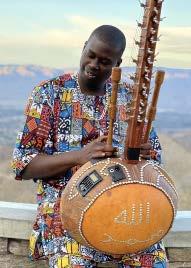
Historically, the Black- American characters in this play come from a long line of storytellers who originate in Africa. The large continent of Africa has more than eight hundred languages spoken among the various groups. Each of these groups has their own terms to describe the storyteller. In the West, the most common is Griot, a French word denoting an expert in oral performance. Among the Yoruba storytellers are Akewi, among the Hausa they are Maroka , and among the Xhosa people they are Imbongi. These storytellers were considered the Guardians of words, wisdom, and myths, and were the most important figures in their communities in many African cultures.
When the Africans who survived the horrors of the Middle Passage were brought to the Americas during the slave trade, the slavers denied them many of the rich traditions they had practiced for thousands of centuries. Their names, which had cultural substance and meaning, were taken away, as well as their rights to practice their religion and speak their native languages.
However, the enslavers could not take away their collective memories of culturally rich stories, including folktales, epics, myths, and legends, that they brought from Africa. The oral tradition of sharing these stories took on even more importance as they were a vital way to preserve their people’s principles, values, traditions, and history so far from their homeland.
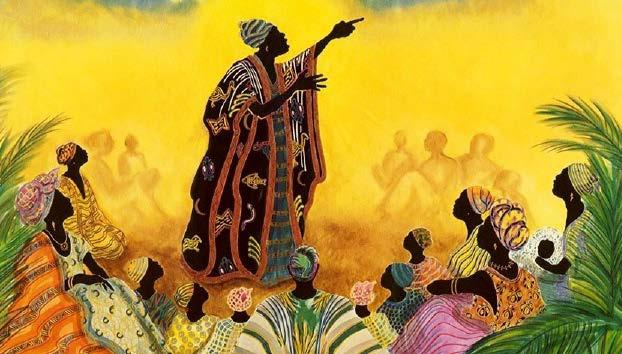
The most common form of storytelling among the enslaved people was the folktale. Most involve animals as the principal characters. The stories may have been told in Africa about the hyena, lion, elephant, and trickster Anansi, the spider. However, over time, in Black American folktales, while retaining the basic African storylines, the animal characters were changed to the rabbit, fox, and bear, which were native to their new land.
During slavery, it was forbidden by law in this country for Blacks to read or write. It was an offense that could lead to death. Even though they didn’t dare write down or read each other’s stories, there was freedom in being able to speak them, carrying on their longstanding oral traditions. These stories bore witness to what they have been through in America and affirm their resilience.
This same resilience to preserve their rich history through oral tradition in the face of U.S. oppression is shared with the Caddo Nation. Despite the repeated forced relocations of the Caddo by the U.S. government and European pressure to assimilate, they retained their oral tradition and their sacred writings, drum rhythms, and songs dating back hundreds of years. The symbolic meanings communicated through these traditions teach lessons and impart cultural values.
The worldview of Native people is intricately woven into the fabric of their language and ways of speaking. The systemic destruction and assimilation of Native peoples have caused some of their languages to weaken in use or even vanish completely. Elders believe if the language is lost, the people will be, too. Teachers, elders, and linguists have been doing vital work to prevent this by capturing Native speech in written form, through online classes, and in language-school “nests” as ways to pass on the languages—and cultures—to younger generations.
SOURCES: ”WHY TELLING OUR OWN STORY IS SO POWERFUL FOR BLACK AMERICANS” BY ANDREA COLLIER FOR GREATER GOOD MAGAZINE, FEBRUARY 27, 2019. HTTPS://GREATERGOOD.BERKELEY.EDU/ARTICLE/ ITEM/WHY_TELLING_OUR_OWN_STORY_IS_SO_POWERFUL_FOR_BLACK_ AMERICANS
AFRICAN AND AFRICAN AMERICAN STORYTELLING BY MADAFO LLYOD WILSON FROM THE TAR HEEL JUNIOR HISTORIAN, SPRING 2002. TAR HEEL JUNIOR HISTORIAN ASSOCIATION, NC MUSEUM OF HISTORY. HTTPS://WWW.NCPEDIA.ORG/CULTURE/STORIES/AFRICAN-AMERICAN
13
TOPICS
THEMES &
SENEGALESE MUSICIAN AMADOU FALL
“THE STORYTELLER” ART BY KATHLEEN ATKINS WILSON
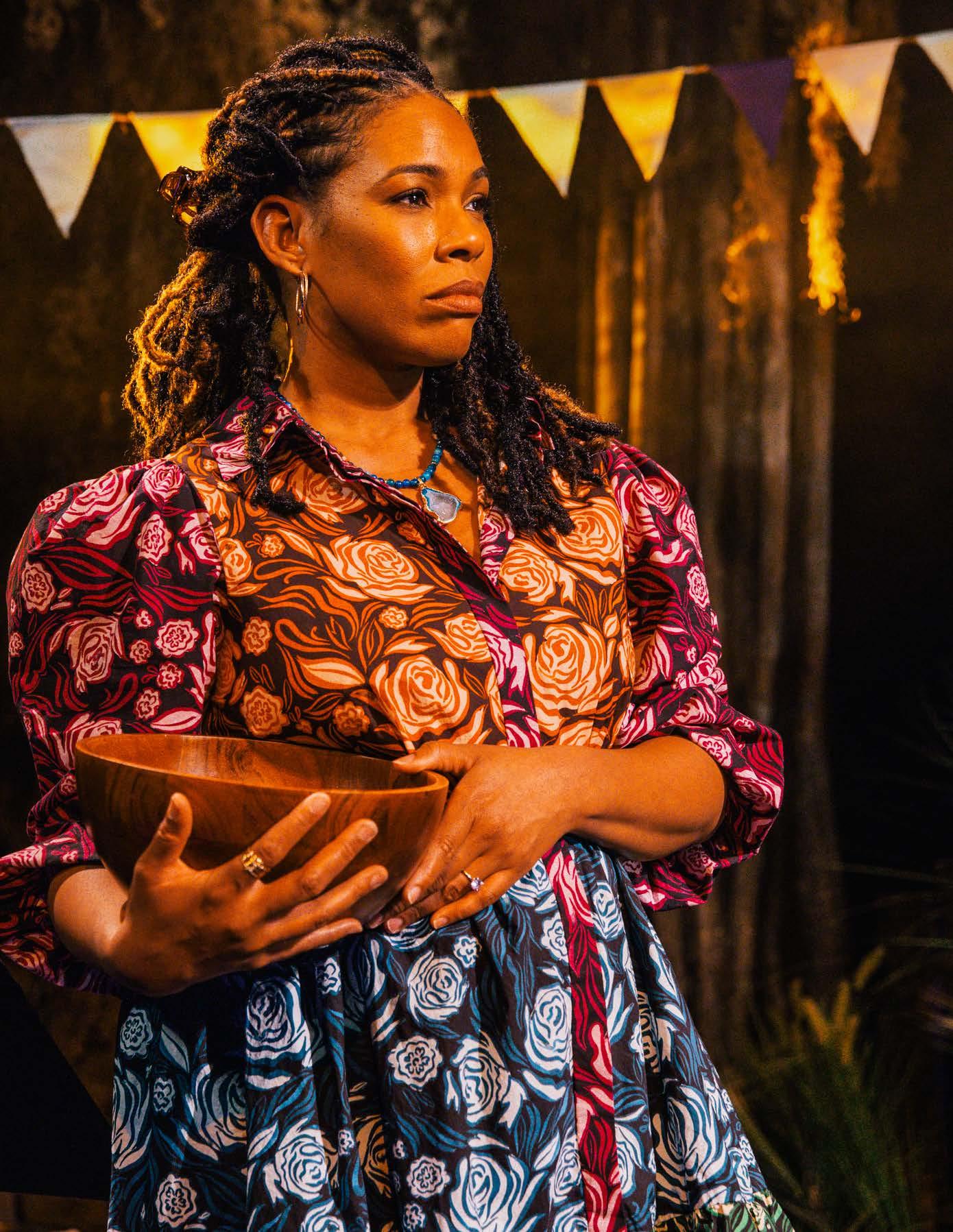
“SEEMS TO ME LIKE THIS WAS AN ANCESTRAL BLESSING.”
14
ANGELA LEWIS AS RAEMEKA MANIFOLD-BALER
PHOTO BY JEFFLORCH
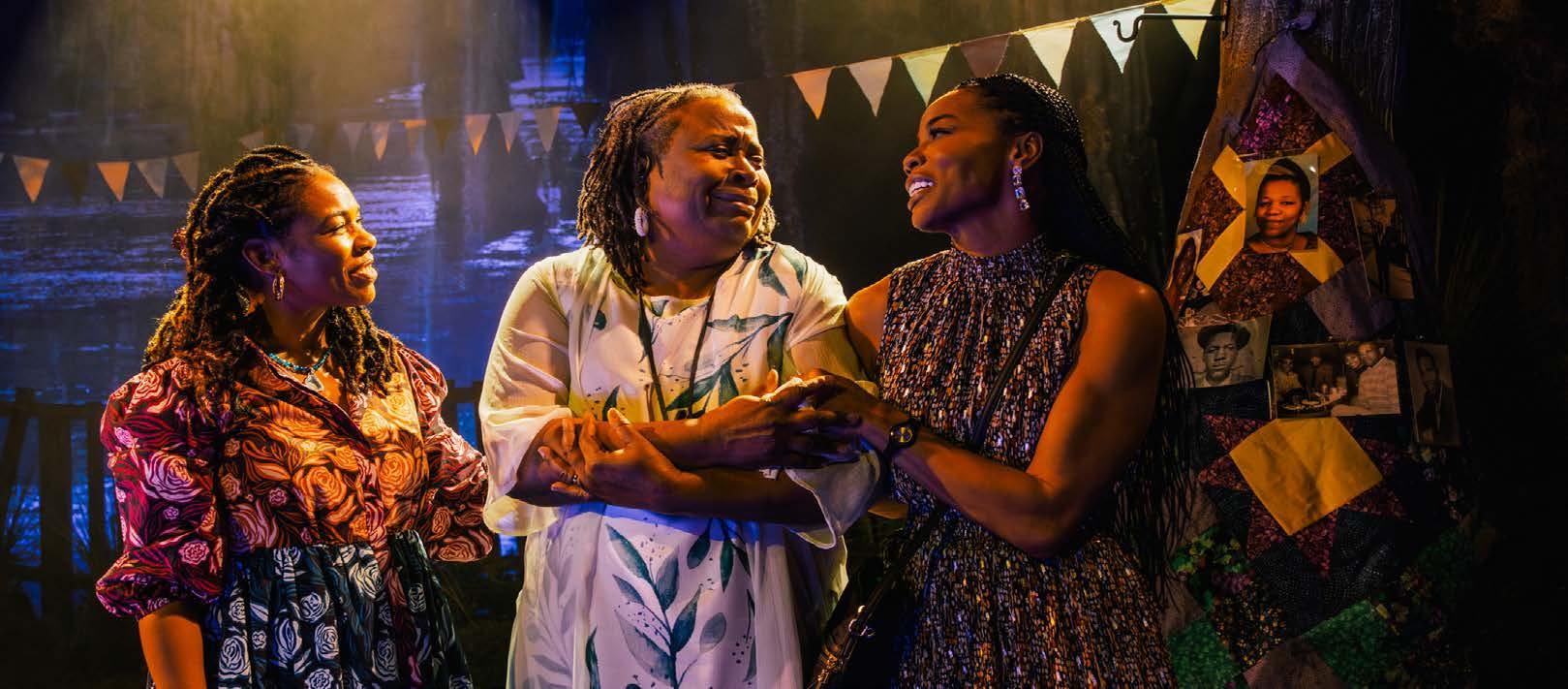
ACTIVITY: COLLECTING YOUR STORIES
ACTIVITY TIME: 1 hour+, which can be completed before or after you’ve seen the play
In this activity you will explore the true stories about the people, places, and events related to your immediate family or your ancestors to write a short story, monologue or theatrical scene. Think of this story as passing down a vital family heirloom to the next generation.
PART ONE: COLLECTING YOUR STORIES

In groups of two, have each partner interview each other about important places, people, or life events in their family. Taking turns, each person must pick one of the given questions below and answer them in as much detail as possible as their partners listen and ask questions. This should take 10-15 minutes for each person’s story.
Questions to Choose From: PLACES
Where was your favorite place to visit when you were a child?
Where did you go for fun and recreation?
Where did you go when you wanted to hide?
Where did you go when you wanted to celebrate?
Where do you practice spirutuality or faith?
PEOPLE
Who was the best cook in the family?
Who was the smartest, grumpiest, kindest, or most religious?
Did anyone in the family have some memorable characteristics?
When did the first family member come to America? Where did they come from? How did they get here? Are any family members still abroad? Have you visited them?
LIFE EVENTS
What are your favorite holidays? Do you have special holiday customs or foods?
Did you ever go on a vacation? Where? Who went with you? What did you do for fun?
When was a time where you had the confidence to make a difficult choice?

Interviewer tips: Ask questions to get more detail. Where does the story take place? Who was in the story? What happened in the story? What happened next? And then what happens? Can you talk about that more? How did it end?

After each person has gone, the interviewer can share what images, people, themes, moments they were drawn to/excited by, what areas they might want to know/hear/learn more about, and what areas needed more clarity.
15
ANGELA LEWIS, KIMBERLY SCOTT & BRANDEE EVANS PHOTO BY JEFF LORCH

Each person will then take 5-10 minutes to journal to write down a quick outline of their own story, feel free to use the worksheet on opposite page. It can be helpful to frame the story with an arc: Where does the story start? Where does the story change? Where does the story end? This is a good place to add or jot down any descriptive imagery and sensory details to add detail to your story, or add any notes and thoughts from the conversation with your partner. A compelling first line sets up the stakes and grabs the audience’s attention.

Use your new outline to help you write and revise your full story. As you write and revise your story, use your words to paint the picture of your story, and be specific!

If your story is about a place: Describe what sounds, colors, smells, textures. When you’re there, how does it make you feel?

If it is about a person: How does their face move when they speak? What does their voice sound like? How do they walk? How do they dress? Listen for dialogue. How do the characters talk?

If it’s about a life event : Describe how old you were. What time of year was it? How did it make you feel? What do you stand to gain or lose? Why is what happens in the story important to you?

How did you change through this or from this? What do you know now that you didn’t before the event happened? What did you learn during the story?
PART THREE: SHARING YOUR STORIES

Once you have your story on paper, you can return to your original partner and share your story, or each person can read their story aloud to the group. As you read your story, think about what makes a performance fun to watch! As you listen to others stories- think about the ways in which we tell stories and how a performer can connect with the listener. Characterize your narrative voice – the storyteller’s delivery. Is it playful, formal, breathlesss, somber? Or does it have moments of each?
PART FOUR: EXPANDING YOUR STORIES PART

This story can be explored further by using it as inspiration to write a short story, monologue or even a theatrical scene like the ones we see in Black Cypress Bayou. Often works of fiction can come from the truth in our own lives. As you explore this story, feel free to use your imagination to explore, embellish, adapt, add cultural and historical research, change character names or settings, or even explore different genres.
AT HOME: COLLECTING YOUR ELDERS’ STORIES

You can share this activity at home and in your community. With their consent, interview someone from your family, a neighbor or someone from your community to hear their story.
You can use the same questions above as prompts, or ask them to pick a photo they love and tell the story behind the photo.
Ask if you can record their story or take notes as they tell it. Note the details of their story and the way in which they tell it.
Ask if you can use their story as part of your writing, and using the same outline exercise on the opposite page to organize the story with a beginning, middle and end and add any descriptive imagery or detail to the story.
You can honor this person’s story by now writing a short story, monologue or even a theatrical scene like the ones we see in Black Cypress Bayou. These tales are family heirlooms and they are a gift to each generation that preserves them by remembering them and passing them on.
16
RECORDING
TWO:
YOUR STORIES

ACTIVITY: COLLECTING YOUR STORIES
WORKSHEET: OUTLINING YOUR STORY

Use the worksheet below to organize the elements of your story. The outline should be the skeleton of your story, with key moments of the story to help thread the beginning to the end.
BEGINNING: Where does your story start? Set the scene.
MIDDLE: Where does your story change? What event happens to shift the story?
CHARACTERS:
Who is in this story? How would you describe them?
END: Where does your story finish? How did you change through this or from this?
SENSORY IMAGES:
What images descriptive words will help paint the picture of your story? Be specific! List at least three.
FIRST LINE: Think about a compelling first line that sets up the stakes and grabs the audiences attention.
17
CUT ALONG THIS LINE TO REMOVE ACTIVITY FROM BOOKLET
ALL MANNER OF SOUTHERN TERRORS
“WE HONOR THE OUNTLESS AFRICAN AMERICAN MEN AND WOMEN WHOSE NAMES HAVE BEEN LOST TO GENERATIONS OF DISPLACEMENT, ENSLAVEMENT, LYNCHINGS, MIDNIGHT RAIDS, JIM CROW LAND THEFT AND ALL MANNER OF SOUTHERN TERRORS.”
SHARECROPPING: SLAVERY REROUTED
THOUGH SLAVERY WAS ABOLISHED IN 1865, SHARECROPPING WOULD KEEP MOST BLACK SOUTHERNERS IMPOVERISHED AND IMMOBILE FOR DECADES TO COME.
excerpts by Jared Tetreau
Sharecropping is a system by which a tenant farmer agrees to work an owner’s land in exchange for living accommodations and a share of the profits from the sale of the crop at the end of the harvest.
The system emerged after the Civil War, when the southern economy lay in ruins. With the Confederate monetary system wiped out, farm land decimated, and slavery abolished under the 13th Amendment, access to labor and capital was extremely limited among Southern landowners. For former enslaved people, federal proposals to redistribute land fell apart in the 1860s, leaving millions without the promises of full citizenship guaranteed to them by the 13th, 14th and 15th Amendments.
Pitched as a solution for both groups, sharecropping was presented to the formerly enslaved as land ownership by proxy. It put an end to work in “gangs” under an overseer, while keeping Black workers within the agricultural sector, preferably on the same land where they had been held captive, and incentivizing high crop yields, benefitting landowners. But even though the old plantation system had changed and some dayto-day activities were delegated to sharecroppers, sharecropping proved a fundamentally unequal arrangement, organized to keep Black farmers from ever achieving economic or social mobility.
Many white southerners after Emancipation were determined not to pay for something they had once had for free—Black
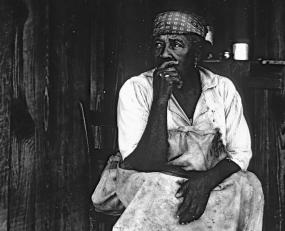
labor. White landowners developed systems adjacent to slavery. On the plantations, this took the form of sharecropping, though the transformation did not happen overnight. Black Americans in the South were eager to exercise their newfound freedoms after the war. As historian Wesley Allen Riddle writes, “the most basic and symbolic” of these freedoms was “mobility” itself. The formerly enslaved people left the plantations in droves, some looking for work in the South’s devastated cities, while others looked for—and were given by the Union Army—vacant land on which to raise a farm. But work in cities was hard to come by. Only about 4 percent of Freedmen were able to find work in southern cities after the war, and many who came there were relegated to shantytowns of the formerly enslaved. As for those that were given vacant lands by the army, they were forced out when President Andrew Johnson canceled Field Order No. 15 in the fall of 1865, returning these properties to their white owners.
By design, sharecropping deprived Black farmers of economic agency or mobility. Although they were no longer legally enslaved, sharecroppers were kept in place by debt. As their income was dependent on both the profits from the sale of the crop and the whims of the landowners, sharecroppers had to find means to sustain themselves during the rest of the
18 THEMES & TOPICS
-LADYBIRD MANIFOLDl
IN THE PLAY: Vernita says that Rutherfords, the owners of the Slaughterhouse and Processing Plant were “Tryna keep us in modern day sharecropping.”
WOMAN ON PORCH, 1937 PHOTO FROM ENCYCLOPÆDIA BRITANNICA
year. They were forced to purchase food, seed, clothing and other goods on credit, typically from a plantation “commissary” owned by the landlord.
At the end of the harvest, when revenue from the crop was “settled up,” the sharecroppers’ portion of the profits was calculated against their debts. As a result, sharecroppers often ended the year owing their landlords money. What could not be paid off was carried into the next year, creating a cycle of indebtedness that was often impossible to break.
Sharecroppers in debt to their landlord were subject to laws that tied them to the land. If they attempted to move, any new tenancy contracts they signed with other landlords could be voided by their existing ones. If they ran away, they could be brought back to their landlord in chains, and made to work as a prisoner for no pay at all. Even if sharecroppers did not try to leave, they still faced massive obstacles in achieving any kind of solvency. For instance, many Southern states limited how and to whom sharecroppers could sell their part of the crop. In Alabama, cotton had to be sold and transported during the day, and could only be purchased by a state-defined “legitimate” merchant. As sharecroppers couldn’t afford to lose a day’s work to take their crop to market, these laws curtailed their ability to sell their product at the best possible price.
In addition, individual freedoms were crushed by tenancy contracts, many of which included arbitrary clauses forbidding alcohol consumption, speaking to other sharecroppers in the fields or allowing visitors on rented land.
Black sharecroppers could not seek redress through the political system either. Despite the ratification of the 14th and 15th Amendments, the southern “Redemption” that followed the withdrawal of Union troops from the South in 1876-1877 ensured that the federal government would not enforce Black voting rights.
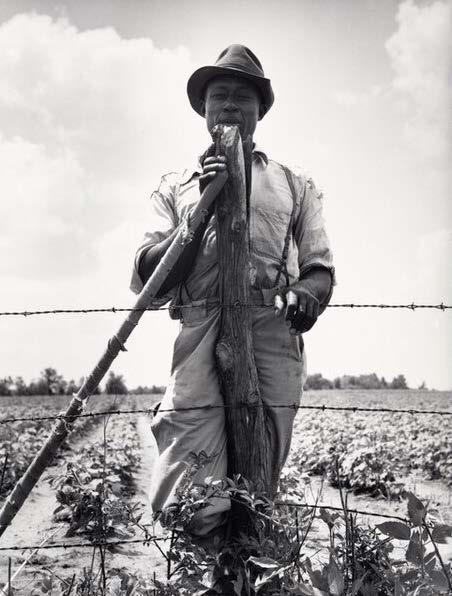
gress to abolish the Freedmen’s Bureau, a federal agency designed to provide food, shelter, clothing, medical services and land to newly freed African Americans. With the dissolution of the Bureau, few resources remained for the approximately 80 percent of Black people who were illiterate.
Sharecropping, with its prohibitive restrictions on physical and economic mobility, its use of violence and intimidation and its emphasis on maximum production, denied Black Southerners the ability to gain wealth, to exercise the freedom granted them by Emancipation and to gain the education they were deprived of during enslavement. The system existed, in conjunction with other institutions, to exploit Black labor at a minimum “relative loss” to white landowners while keeping the Black population underfoot.
SHARECROPPING’S LEGACY
After dominating the southern agricultural economy for decades, sharecropping was, like most other farming practices, upended by the rise of new technologies. While these changes were delayed by the Great Depression, sharecropping had become obsolete in many areas of the South by the mid-twentieth century. With increased mechanization, white planters’ demand for Black labor dried up.
Also during this time, Jim Crow obstructions to Black enfranchisement, as well as state-sanctioned violence against Black people, were directly challenged by the Civil Rights Movement and the landmark legislation it helped enact. The Civil Rights Acts of 1964 and 1968 and the Voting Rights Act of 1965 deconstructed de jure segregation across the South in housing and public accommodation, while empowering the federal government to secure the right to vote for Black Southerners.
Black elected officials disappeared from Congress and state legislatures, and attempts at organizing Black voters were brutally suppressed, as in New Orleans in July of 1866, where a convention of Black voters was attacked by a white mob under police protection that killed an estimated 200 people.
Educational opportunities were also sparse.
In 1872, white Southerners pressured Con -
As scholars Paru Shah and Robert S. Smith note, enfranchisement, desegregation and the decline of sharecropping weakened “the broader agenda of White Supremacy to crush African American socioeconomic mobility,” but did not destroy it. The effects of centuries of Black economic and social oppression, represented in part by sharecropping, are still felt today. Limited access to capital, to mobility, and to representation during Jim Crow and before it denied Black Americans the ability to save, invest or accumulate wealth, concentrating inherited fortunes in the hands of white families and shaping the present class makeup.
For nearly a century, sharecropping defined Southern agriculture and hindered Black economic advancement. The system reflected a multidude of attempts by the white power structure to keep Black workers stagnant, achieving this through intimidation, physical violence and exploitation. Ultimately, aided by organized action, shifting technological and economic conditions and the determination of sharecroppers themselves, the oppressive reality of sharecropping ended. But in the endemic inequities of American political and economic life, its legacy persists.”
SOURCE: “SHARECROPPING, SLAVERY REROUTED”, PBS BY JARED TETREAU FOR PBS. AUGUST 16, 2023 HTTPS://WWW.PBS.ORG/WGBH/
19 THEMES & TOPICS
AMERICANEXPERIENCE/FEATURES/HARVEST-SHARECROPPING-SLAVERY-REROUTED/
BRAZOS RIVERBOTTOMS, NEAR BRYAN, TEXAS JUNE 1938
PHOTO BY DOROTHEA LANGE
“WE COME FROM A LONG LINE OF PEOPLE KNOW SOMETHING ABOUT HIDDEN PROTECTION.”
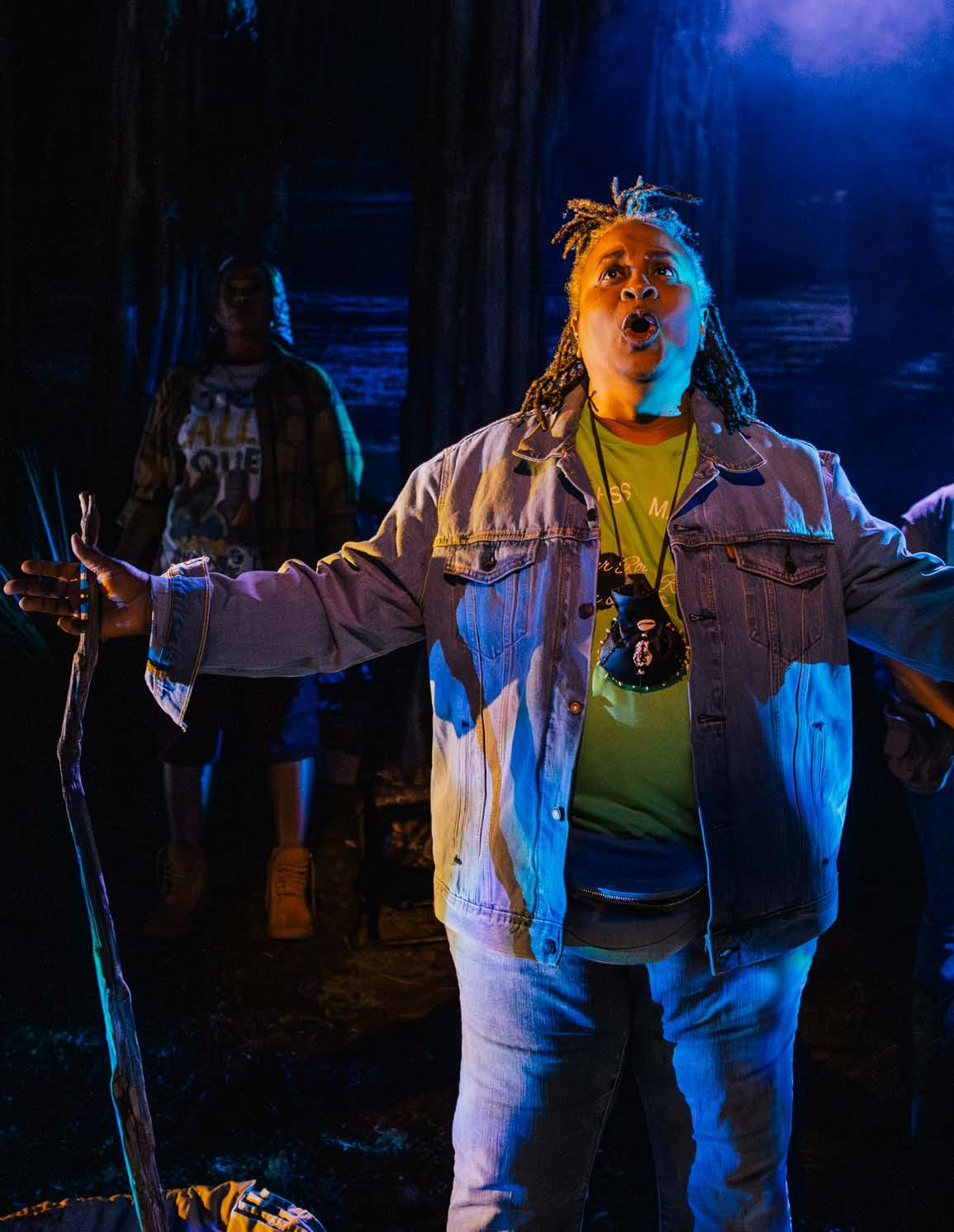
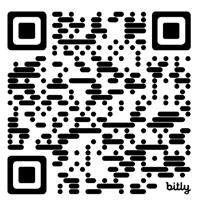
20 KIMBERLY
AS VERNITA MANIFOLD
SCOTT
PHOTO BY JEFF LORCH
code to learn more:
Watch “Uncovering the Power of Hoodoo: An Ancestral Journey” by PBS Voices. Scan this

RITUALS FOR PROTECTION & HEALING
The term “hoodoo” is used to describe African-American traditions of spiritual healing, ancestral devotion, and protection. Hoodoo developed hundreds of years ago, as enslaved people interacted with the local ecologies in which they found themselves. Hoodoo was born of the fragmentation of indigenous African religions and incorporated elements from the environment and indigenous botanical knowledge. It adapted the spirits of nature and the land from traditions from Native American practices, folk magic, European folk religion, and even Christianity, but the dominant traditions were passed on from African ancestry. Embedded in the practice are rituals for healing, good fortune, and well-being. Vernita discusses with her daughters the traditions, rituals and knowledge she passed on to them for their physical and spiritual protection.
Roots and root working specifically refers to the use of certain natural and organic objects in the performance of actions to make things happen, whether healings, poisonings, or supernatural prediction, called divination. Conjure and conjuring refers to interactions with the spirits of humans or angels or saints or other spiritual beings, including the dead and the ancestors. The functions of hoodoo, ranged widely,-- retrieving lost objects, pre
dicting the future, causing people to fall in love, gain riches and good fortune, and other mundane, universal, and ordinary concerns, but there were concerns that were paramount for Black folk, particularly coming out of the experience of enslavement-- safety, defense against racial domination, and protection against violence. Contemporary hoodoo conjure workers draw from practices of collective struggle to address intergenerational trauma and healing justice. They perform ring shouts of mourning and celebration. Workers pray, they tend to the dead with herbs, tobacco, and sacred plants, in order to bless those who have come before. And they gather to sing, to pray, to dance together in the spirit of the ancestors.
RECIPE: GINGER TURMERIC SHOT
SOURCE: “BLACK MAGIC MATTERS: HOODOO AS ANCESTRAL RELIGION: A CONVERSATION WITH YVONNE CHIREAU” NOVEMBER 10, 2021”, HARVARD DIVINITY SCHOOL, HTTPS://CSWR.HDS.HARVARD. EDU/NEWS/MAGIC-MATTERS/2021/11/10
GINGER & TURMERIC:
Potent, anti-inflammatory compound.
BLACK PEPPER:
Enhances the absorption of curcumin when used with turmeric and rich in vitamin A, B, C, E, manganese, . calcium & potasium.
LEMON:
Is an excellent source of vitamin C,antioxidants
HONEY:
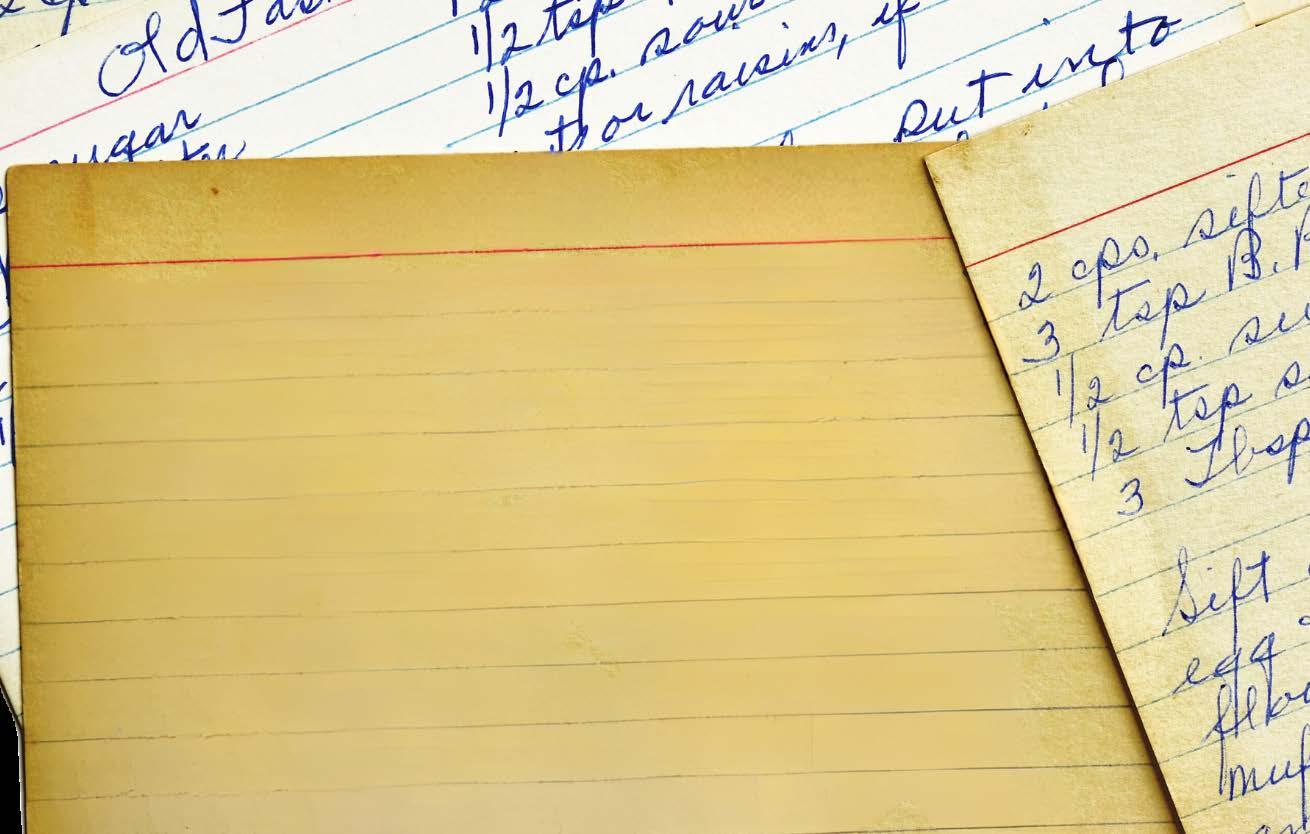
PREP TIME: 5 MIN
Recipe: Ginger
Turmeric Tonic
Contains bioactive plant compounds, antioxidants. Promotes burn & wound healing. Has antibacterial properties
1/2 cup fresh ginger, peeled & sliced
1/2 CUP FRESH GINGER PEELED & SLICED
1/2 TBSP. TURMERIC FRESH OR POWDER
1/2 tbsp. turmeric, fresh or powder
1/2 TSP. BLACK PEPPER
1/2 tsp. black pepper
1-2TBSP HONEY
1-2 tbsp. honey
Find variations of this tonic, as well as other recipes inspired by West African cooking from Elsie at AfroVitalityEats: https://afrovitalityeats.com/
1 LEMON, HALVED & SQUEEZED
1 lemon, halved & squeezed
STEPS
1. COMBINE GINGER, TUMERIC INTO A BLENDER
1. Cobine ginger & turmeric in blender until smooth
2. BLEND UNTIL SMOOTH. TRANSFER TO CHEESE CLOTH OR FINE MESH STRAINER AND STRAIN TO REMOVE PULP
2. Transfer to cheese cloth or fine strainer, to remove pulp
3. ADD IN LEMON JUICE, BLACK PEPPER & HONEY. STIR WELL
3. add lemon juice, black pepper & honey. Stir well.
4. CAN ADD COLD WATER AND TAKE AS A SHOT, POUR OVER ICE & SERVE, ADD HOT WATER AND SIP, OR ADD TO YOUR FAVORITE TEA.
4. Add cold water and take as a shot, pour over ice & serve, add hot water and sip, or add to your favorite tea
5. CAN ADD WATER AND FREEZE IN ICE CUBE TRAYS, OR STORE IN FRIDGE. *CONSUME WITHIN 3-5 DAYS IF STORED IN FRIDGE.
*can add water and freeze in ice cube trays
Consume within 3-5 days,if stored in fridge.
THEMES & TOPICS
THE TRADITION OF THE SPIRITUAL
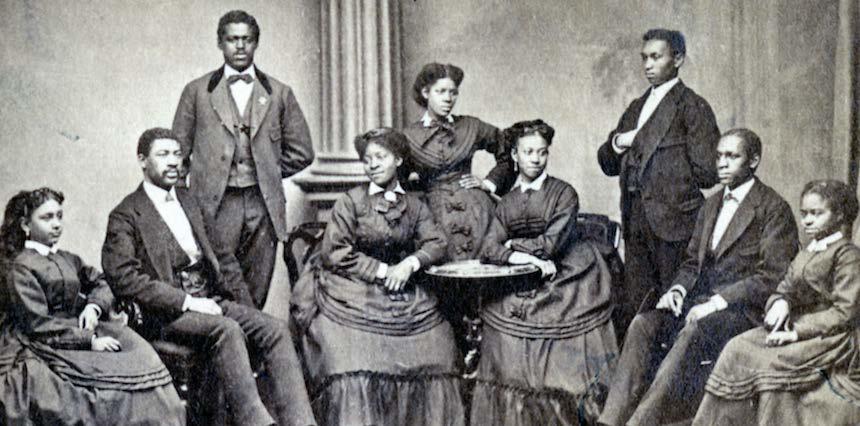
EXCERPT FROM HOE, EMMA HOE (CIRCA 1700)
BY UNKNOWN
REFRAIN:
HOE EMMA HOE! YOU TURN AROUND DIG A HOLE IN THE GROUND.
CALL:
O EMMA HELP ME TO PULL THESE WEEDS!
RESPONSE:
HOE EMMA HOE! YOU TURN AROUND DIG A HOLE IN THE GROUND.
CALL:
O EMMA WORKED HARDER THAN TWO STRONG MEN!
RESPONSE:
HOE EMMA HOE! YOU TURN AROUND DIG A HOLE IN THE GROUND.
The Spirituals of the African-American tradition, sometimes called the “Negro spirituals” are songs created by enslaved Africans in the decades prior to the Civil War. They do not have individual composers, but emerged from the whole community. They were passed orally from person to person and improvised as suited the singers. They were crafted in the fields where the people would sing to pass the day and ease the often tedious work of planting, tending and harvesting the crops. Some were simple work songs in a call response style. The song “Hoe, Emma Hoe” sung in Black Cypress Bayou is an example of this call and response.
Over the years, as the enslaved people and their descendants adopted Christianity, they began to include religious themes into their field songs. They re-shaped it into a deeply personal way of dealing with the oppression of their enslavement. These songs, became known as spirituals and reflected expressions of their faith. The songs told stories, from Genesis to Revelation: Adam and Eve in the Garden, Moses and the Red Sea. They sang of the battle of Jericho, Ezekiel seeing a wheel, Mary, Jesus, the blind man seeing, God troubling the water, and yes, the Devil, as one to avoid!
The songs were also used to communicate with one another in
a kind of code. This was particularly the case when an enslaved person was planning to escape bondage and to seek freedom via the Underground Railroad. These songs of hope like “Steal Away to Jesus” and, “I ain’t got long to stay here” were about escaping to the north and out of slavery.
There were thousands of spirituals. However, the oral tradition of the African ancestors — and the prohibition against enslaved people learning to read or write—meant that the actual number of songs is unknown. Some spirituals include: “Sometimes I Feel Like a Motherless Child,” “Nobody Knows The Trouble I’ve Seen”, “Steal Away,” “Swing Low, Sweet Chariot,” “Go Down, Moses,” “He’s Got the Whole World in His Hand,” “Every Time I Feel the Spirit,” and “Wade in the Water.” Black Gospel music has roots in the oral tradition from African ancestry and was highly influenced by the hymnody of spirituals and later in the 1930’s by musician & composer, Thomas Andrew Dorsey, who is considered to be the father of Gospel music.

LISTEN:The creative team selected songs to play as the audience enters & leaves the theater. What songs would you put on a playlist inspired by the show?
THE HEALING POWER OF SONG
Active music-making within a group setting provides a music-enriched environment that encourages simultaneous physical, social and emotional engagement, lending a therapeutic advantage by stimulating multiple complementary processes in the brain. In musicians the white matter connections between the two hemispheres of the brain are thicker. These pathways are responsible for linking the activities of the motor cortex (responsible for voluntary movement such as walking) and the somatosensory cortex (responsible for processing information about touch, temperature and pain) across the two sides of the brain.
Many areas of the brain that react to music:
In the temporal lobe, areas for speech processing overlap with areas that process music.
Songs associated with strong memories can activate the nucleus accumbens, the so-called pleasure center of the brain, and the hippocampus, which plays a prominent role in formng new memories
Music can lower the production of cortisol, which lowers stress and in turn lowers elevated heart rates and blood pressure, and promote daydreaming.
22 THEMES & TOPICS
SOURCE: “CELEBRATING AFRICAN AMERICAN HISTORY MONTH THROUGH THE SPIRITUALS” FEBRUARY 20,2022”, BY MSGR. CHARLES POPE,.HTTPS://BLOG.ADW.ORG/2022/02/CELEBRATING-AFRICAN-AMERICAN-HISTORY-MONTH-THROUGH-THE-SPIRITUALS/
THE FISK JUBILEE SINGERS IN EARLY 1872. COURTESY OF SANDRA JEAN GRAHAM.
“BACK IN OLD DAYS, THEY GAVE US THE WORST BITS OF LAND TO BURY OUR PEOPLE. WE DIDN’T HAVE NO WAY TO MAKE PROPER MARKERS SO THE ANCESTORS WOULD PLANT A TREE TO SHOW WHERE SOMEBODY WAS BURIED.
THE TREE WOULD ROOT AND USE THE BODY FOR NOURISHMENT TO GROW TALL. OUT OF DEATH CAME LIFE. BEAUTY. PROTECTION. SOME FOLKS MY AGE CAN’T EVEN STAND TO LOOK UP. “TOO MUCH PAIN UP THERE,” THEY SAY.
BUT WHEN I LOOK AT THAT CANOPY, IN A WAY, IT’S LIKE I’M LOOKING AT THEM. WHENEVER I TOUCH ONE OF THESE TREES, I’M TOUCHING OUR PEOPLE.”
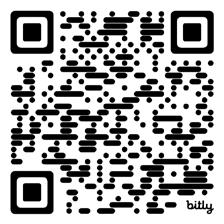
Watch
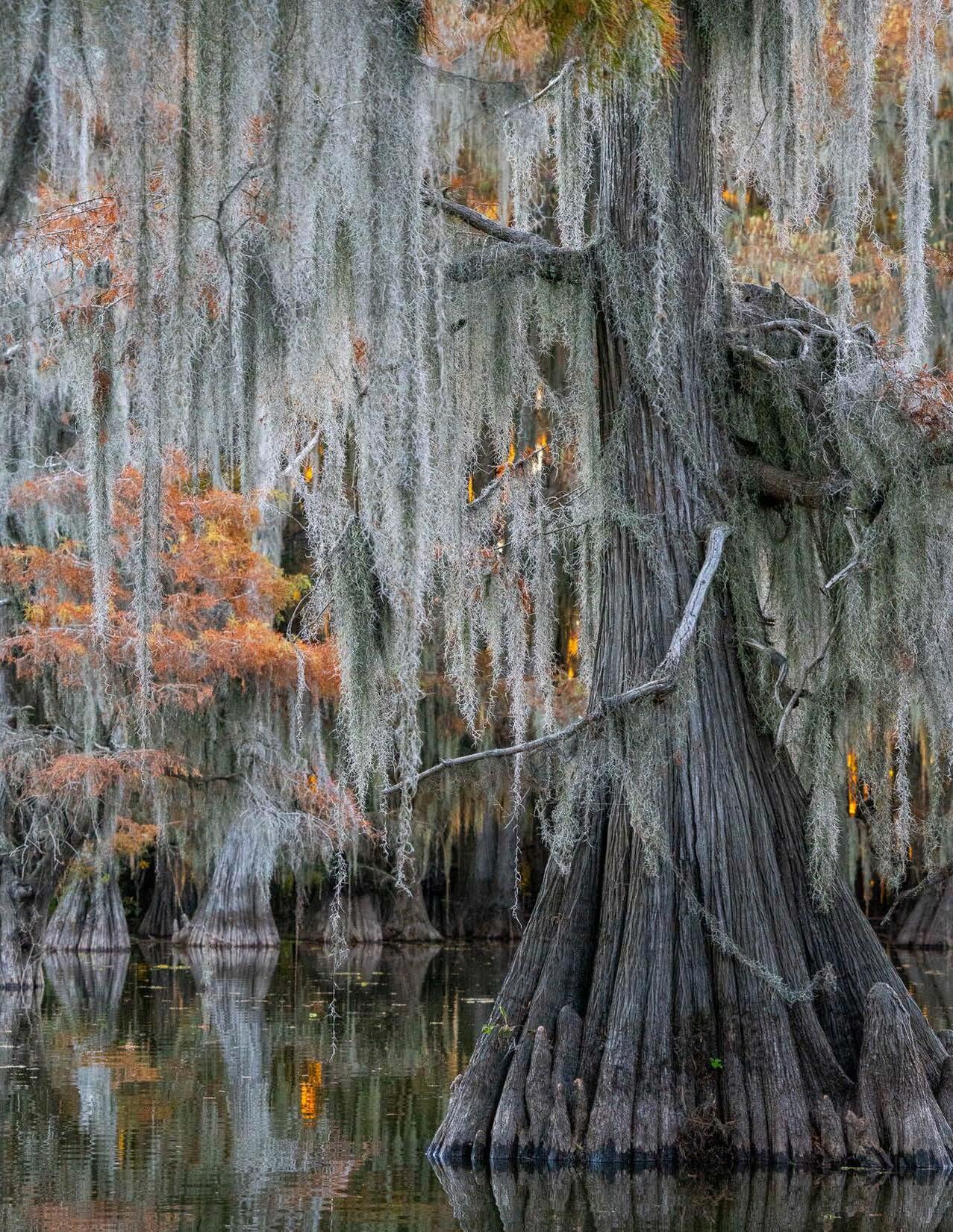
Watch
CADDO LAKE, TEXAS
PHOTO:
SUSAN G SMITH
23
“The History of the South’s Forbidden Black Burials” by PBS Voices. Scan this code to learn more.
“The Black Church: The Role of Music” by PBS. Scan this code to learn more.
Hear “Swing Low, Sweet Chariot” sung by Robert Robinson. Scan this code to listen.
Hear two different recordings of “Wade in the Water” from 2019 and 1925. Scan this code to listen.
ONLY 2 PEOPLE ALIVE CAN SPEAK
THE CADDO LANGUAGE FLUENTLY. THEY HOPE
A NEW PROGRAM CAN SAVE IT
By Pablo Arauz Peña
Published March 15, 2023
Today, the Caddo Nation of Oklahoma is in a race against time to save what’s left of their critically endangered language.
The ground is colored red at the Caddo Nation dance grounds where Leonard Kionute sings a traditional Caddo song.
“Hayah’nah weneko, Hayah’nah weneko,” he chants. Kionute says the song is an ode to all things on earth.
He’s the cultural director for the Caddo Nation’s child care program. He’s tasked with passing on the culture and language to new generations of Caddo.
It’s a task that’s absolutely crucial for the Caddo.
“We’re talking about having fewer numbers that are fluent speakers, it’s gonna be really tough,” Kionute said. “But that’s what we’re here for.”
Before the COVID-19 pandemic, citizens of the Caddo Nation took part in a community-wide survey for people who could speak the language fluently. They found seven people could speak the language, also known as Hasinai.
But during the pandemic, the tribe found that five of the seven fluent speakers had died.
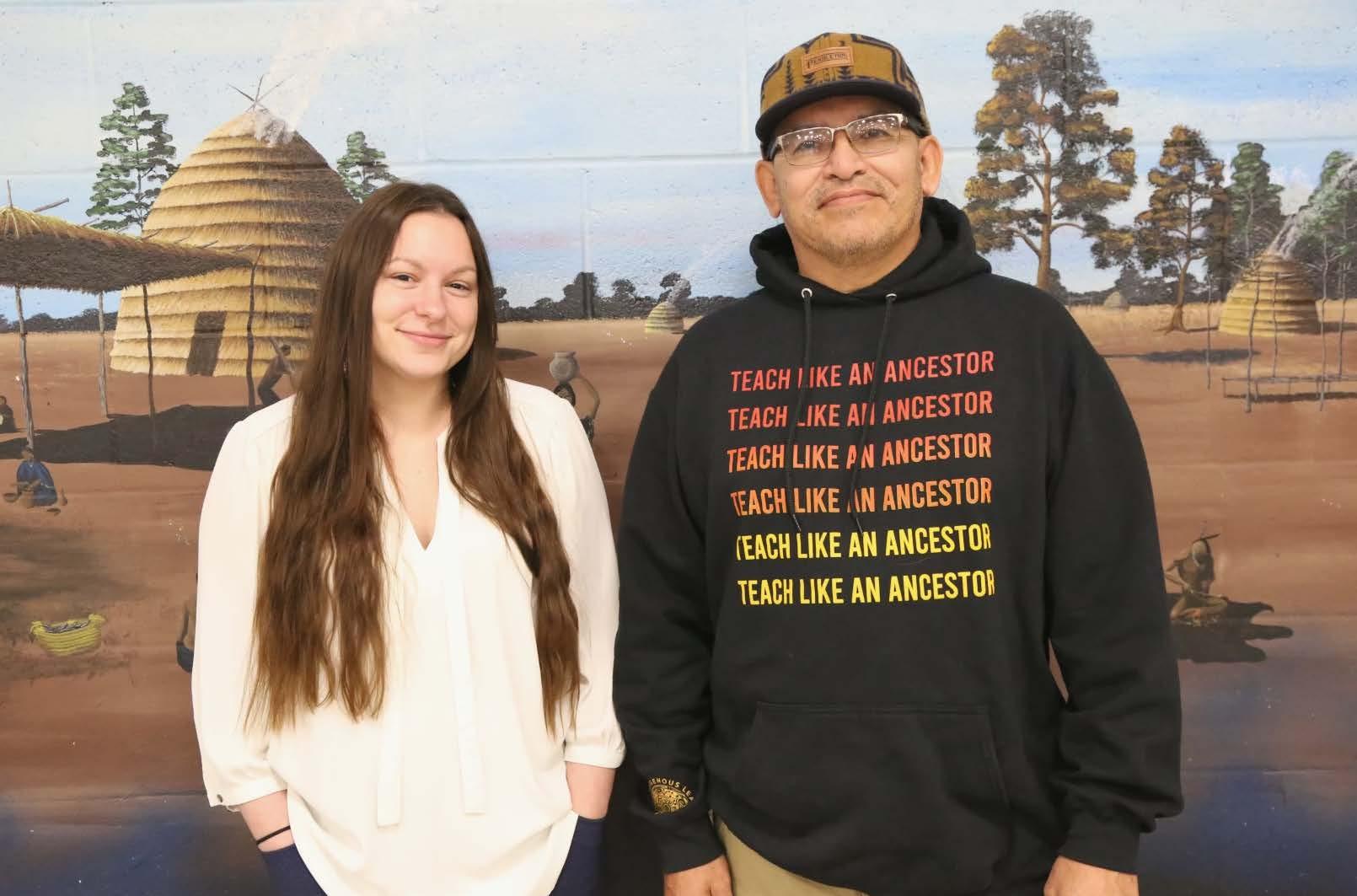
“That was extremely devastating for us,” said Alaina Tahlate, the language revitalizationist for the Caddo Nation’s language preservation program. “It brought our count to two speakers.”
The program is part of a decades-long effort to preserve the language. Tahlate was officially hired by last summer by the tribe to lead the program. Now, she’s working with one of the last fluent speakers — a 93-year-old elder named EJ — to document, preserve and pass along knowledge of the language.
The Caddo have strong roots in Texas. In fact, historians have traced the word “Texas” to the Caddo word “tay-sha,” which means friend.
Today the Caddo largely reside in Binger, Oklahoma, far from their ancestral lands. The Caddo are native to East Texas and parts of what’s now Louisiana, Arkansas and Oklahoma. About 7,000 people are enrolled in the Caddo Nation today. Most live in and around Southwest Oklahoma.
And despite hundreds of years of colonization, the tribe continues to preserve its culture, including its language.
“Our language helps us to be able to access our history and our knowledge of who we are as people and one of the aspects of our culture that is uniquely ours,” Tahlate said.
Like many Native American tribes, the Caddo lost much of their language and culture as a result of violent federal policies that destroyed many aspects of tribal culture. Those policies included boarding schools where Native children were discouraged from speaking their Indigenous language.
Between disease and attacks by settlers and other tribes the Caddo were reduced to a few hundred people in the 1800s, according to Phil Cross, one of the foremost historians of the tribe. Cross is working on a book that traces the tribe’s displacement from their homelands up to their resettlement in southwest Oklahoma. Before colonization, he said, the number of Caddo people was at least in the tens of thousands.
“We had our language and, you know, a hierarchy of people,” he said. “That’s how we existed. Farming, there was some hunter-gathering and often around a mound that was for [ceremonies] and served too, as burial platforms.”
Cross documented 10 different relocations of Caddo people since the early 1600s. He’s also done extensive research on the Caddo’s time on a reservation in North Texas — once known as the Brazos Reservation in present-day Young County.
It was a dangerous time for the tribe because of hostile white set-
THEMES & TOPICS 24
ALAINA TAHLATE AND LEONARD KIONUTE
PHOTO BY PABLO ARAUZ PEÑA
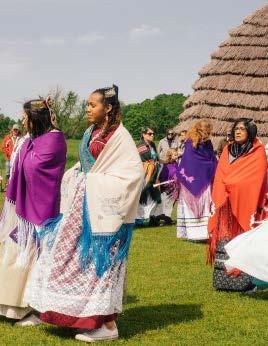
THE ORIGIN OF THE WORD TEXAS COMES FROM THE CADDO WORD “TAYSHA”, WHICH MEANS “FRIEND“.
25
CADDO MOUNDS STATE HISTORIC SITE, TURKEY DANCE PHOTO COURTESY THE TEXAS HISTORICAL COMMISSION
tlers, Cross said. The Caddo also shared the reservation with other tribes including the Wichita, Tonkawa and Comanche.
“When that reservation was established, because it was so dangerous, they felt we were gonna get wiped out,” Cross said.
After threats from a violent mob of white frontiersmen, a federal agent by the name of Robert Simpson Neighbors evacuated the Caddo and other tribes from the reservation to their present-day home near Binger, Oklahoma.
When Neighbors returned to Texas after the successful evacuation, he was shot and killed by a white man. Some Caddo still visit Neighbors’ grave to this day to honor him for saving their tribe, including Tahlate and her family.
In the years since the tribe’s relocation, the Caddo have worked hard to preserve what’s left of their culture.
In nearby Hinton, Oklahoma, the Caddo Nation bought a property next to a creek and a forest of evergreen trees. That’s here the tribe hopes to teach the next generation of Caddo about the culture and language they’ve worked so hard to prese
Chairman Bobby Gonzalez, the tribe’s elected leader, says the Caddo have been working on bringing back the language for decades.
“We are in this together,” Gonzalez said. “We are doing everything we can to provide all the tools and the resources tuned to our language program, our culture programs, our traditions, all the programs that we have, because it’s all tied together, one way or the other.”
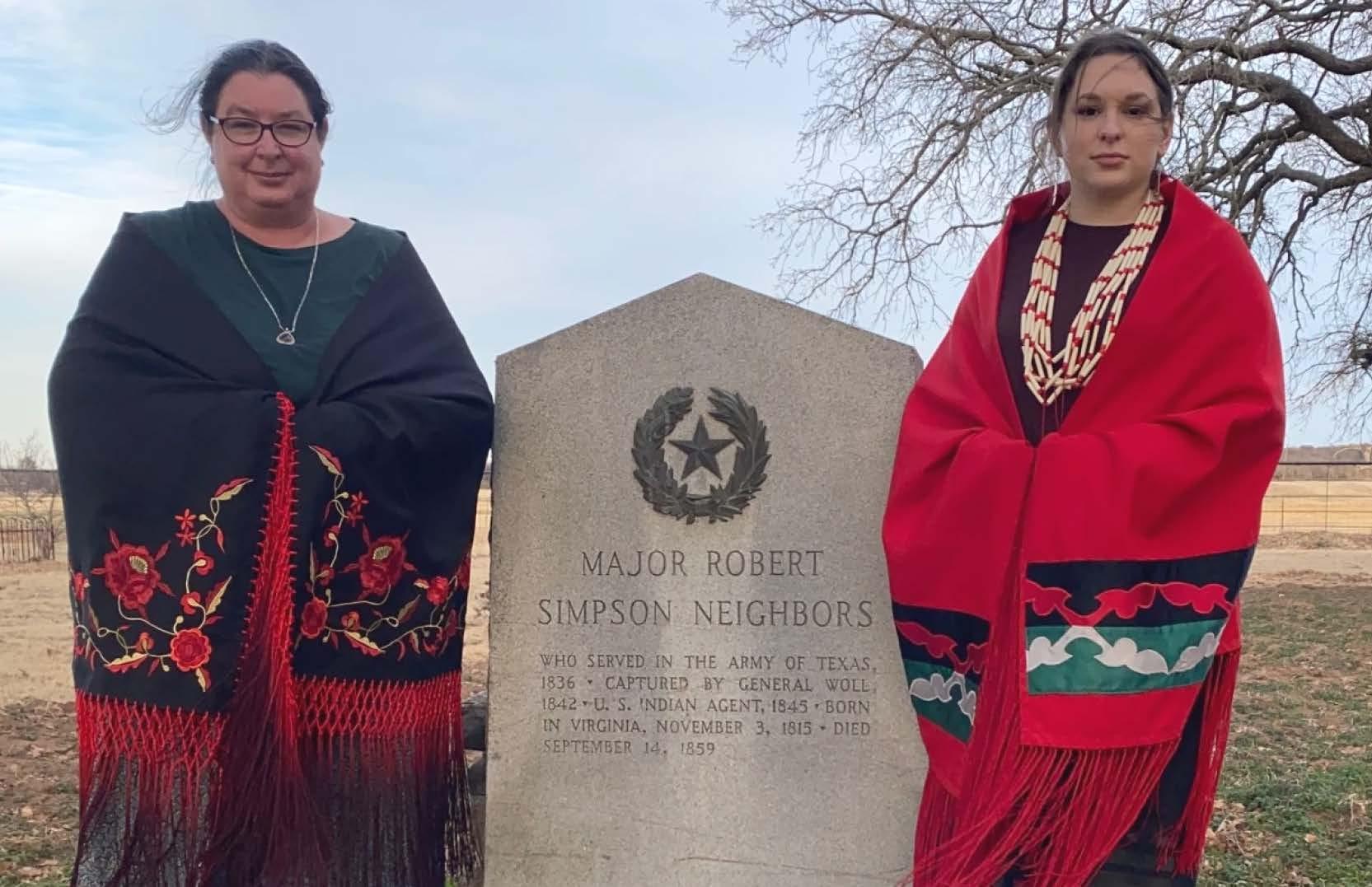
“Hokto’de ani’Bo’isabolaba’na’ – Once upon a time, I was a little boy,” Gonzalez recalls. “I heard them say that — ‘dacona Hasinai’ – ‘Talk Caddo. We’re going to talk Caddo — listen to us, pay attention to us, one of these days, we may not be here.’”
Gonzalez says while the Caddo language may not be spoken widely as it once was, the tribe hopes to save what it can.
And through the Caddo Nation’s efforts, he says the culture — and language — will live on.
“I think the most important thing is that we’re still alive,” Gonzalez said. “We’re alive and well. We’re an ancient tribe, and we’re going to be here time immemorial.”
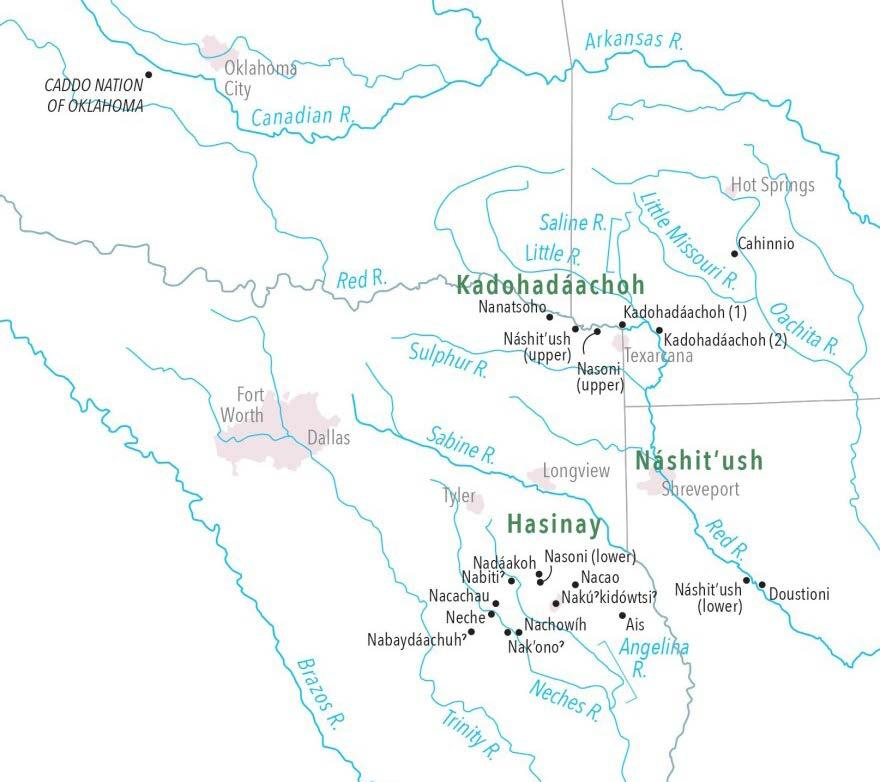
SOURCE: “ONLY TWO PEOPLE CAN ALIVE CAN SPEAK THE CADDO LANGUAGE FLUENTLY”, KERA, BY PABLO ARAUZ PEÑA, MARCH 15, 2023, https:// www.keranews.org/texas-news/2023-03-15/caddo-nation-language-program
Watch “Caddo Language Revitilizations” by The Texas Historical Commission. Scan this code to learn more:
Hear “The Caddo Peyote Song”. The Caddo are actually one of the few tribes today who still practice the ghost dance. Scan this code to listen:
Watch and learn more about the Texas Caddo tribes from the Texas History Initiative. Scan this code to watch:

Scan this code to learn about the Hidden History of “Hand Talk”; the Plains Indians Sign Language used for trade, hunting, storytelling, & rituals, from Vox.com

THEMES & TOPICS 26
Gonzalez remembers learning Caddo at an early age from his elders.
ALAINA TAHLATE AND HER MOTHER TRACY NEWKUMET
PHOTO FROM ALAINA TAHLATE
A MAP OF THE CADDO’S ANCESTRAL LANDS IN PRESENT-DAY EAST TEXAS, WESTERN LOUISIANA, SOUTHWEST ARKANSAS AND SOUTHEAST OKLAHOMA.
PHOTO BY ALAINA TAHLATE

ACTIVITY TIME: 1 hour +, which can be completed after you’ve seen the play.
Costumes can, reveal lots of information about a character’s personality, background, circumstances within the play, help communicate their journey, and help reflect the historical context of a play. As well as helping the audience to understand the character and the show, performers can find it easier to ‘become’ their character once they try their costume on.
In this activity, you will create two different costume looks for Vernita Manifold when she was 30 (the same ages as her daughters, Ladybird & Meka, in the play)
DESIGN: One costume for an everyday look and one costume for a special event (like the park opening at the end of the play). It must be an original design, so it must be your interpretation of the character & their costume.
PART ONE: THE CHARACTER
CHARACTER NAME, AGE AND PRONOUNS: Vernita Manifold, 30-35, she/her
ACTIVITY TIME: 1 hour+, can be completed after you’ve seen the play.
CHARACTER DESCRIPTION: Who is this person? Now that you’ve seen the play, use examples from the play to write your description. Think about the ways that Vernita might be similar now to when she was younger, and think about the ways that she might be different. How has she changed? What is still true about her character?
PART TWO: RESEARCH & INSPIRATION
LOCATION & TIME PERIOD: East Texas, 1990
Research the history and the fashion trends of the time period, culture and location.

CONSIDER: What season is it? What colors represent the character’s personality? What does the character do in the scene or for work?
It can be helpful to create your own image board for inspiration! Images can be more than just fashion- think about how images make you feel, what textures/patterns you see, or a vibe & aesthetic that matches your design concept.
PART THREE: CREATING YOUR DESIGN

CONSIDER:
• What the costume needs to communicate about the character, the context and the style of the production to the audience.
• How you would use color, fit, fabric, cut and the conditions of costume to communicate these to your audience.
• Think about the space the actor is performing in and how your costume needs to respond to those needs. What type of movement does the actor need to do in the play?
• What elements of your design need to be purchased? What elements of your design need to be created/stitched/sewn?
What kind of fabrics do you want to use?
• What hairstyle/s would the character have?

SKETCH: Flip this page over for a croquis template to use for your preliminary design. (The word “croquis” is derived from French, meaning “quick sketch”. In fashion, the croquis is an outline drawing of a fashion figure or model.
Decide if you want to use pencil, pen, marker, or snap a photo of the croquis to create your design digitally.
27
ACTIVITY: DESIGN A COSTUME
MARY MARGARET PETTWAY STITCHES A QUILT.
PHOTO © STEPHEN PITKIN/PITKIN STUDIO
DESIGNED BY:
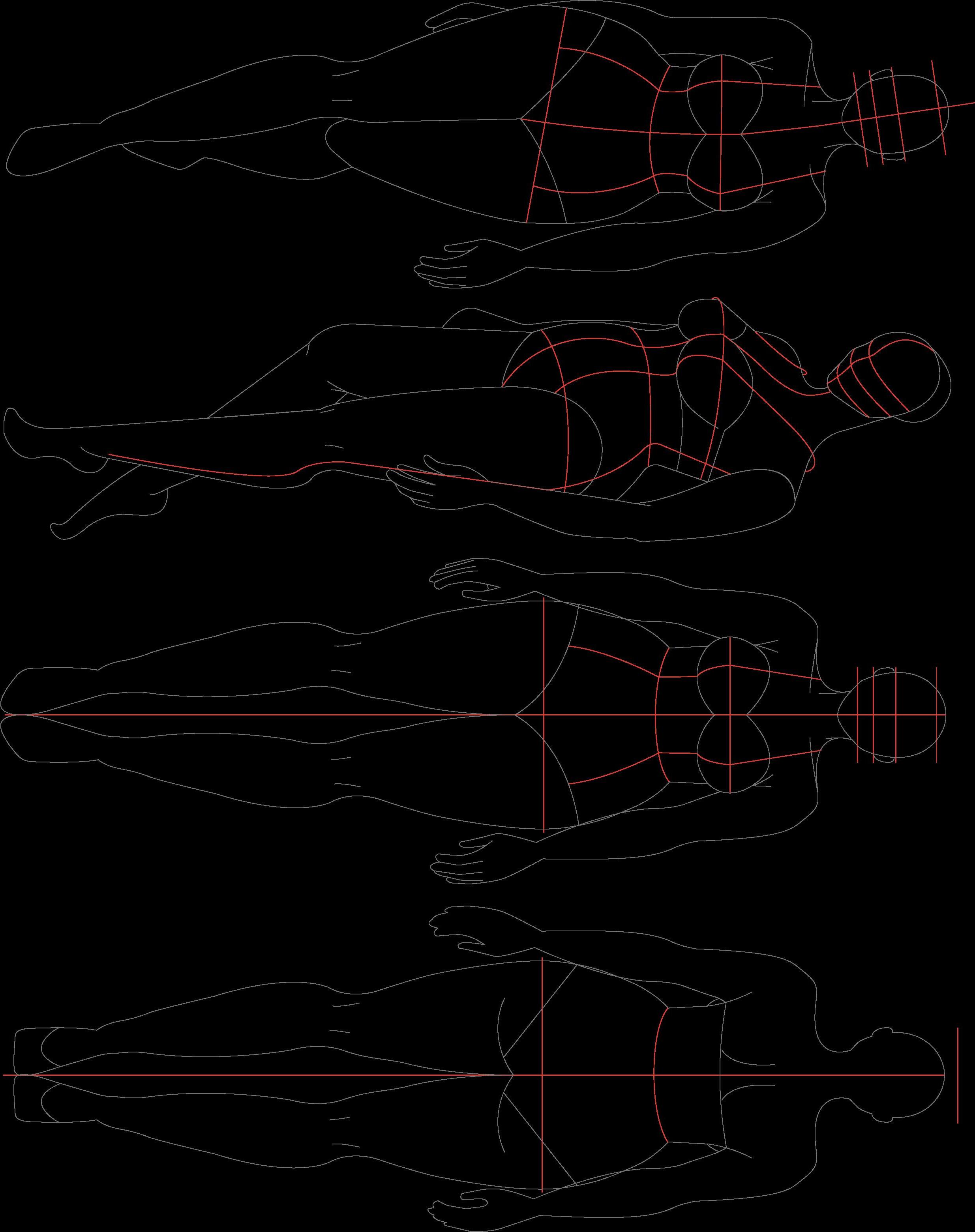

28
ACTIVITY: DESIGN A COSTUME PART FOUR: SKETCH YOUR DESIGN CHARACTER NAME: VERNITA MANIFOLD, 30, she/her
CUT ALONG THIS LINE TO REMOVE ACTIVITY FROM BOOKLET

“WE LOVE DEEP AND HARD, WHEN FEAR AINT IN THE WAY.”
29
BRANDEE EVANS AS LADYBIRD MANIFOLD PHOTO BY JEFFLORCH
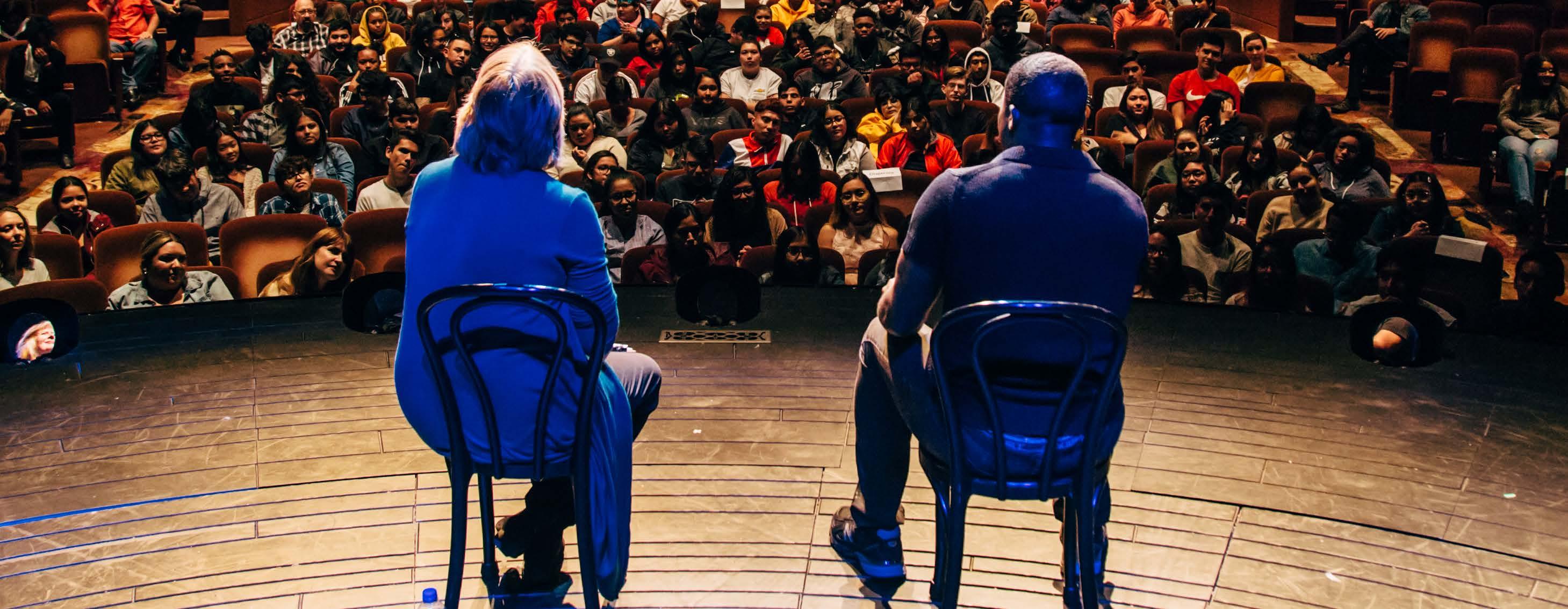
POST-SHOW DISCUSSION QUESTIONS
Depending on the time available and your participants’ interests, guide them to respond to the suggested below. Encourage everyone to participate and respect differing opinions. Individuals can share their thoughts with a partner or in a small group. Ask for several volunteers to share their groups’ answers with the larger group.
• What images and moments from the performance stood out or resonated with you? What was meaningful, stimulating, surprising, evocative, memorable, interesting, exciting, striking, touching, challenging, compelling, delightful, different, and unique?
• What characters reminded you the most of yourself or a family member, and why?
• Describe the design elements of the show? What did you see in the sets and lights? What did you hear in the sounds and the music? How did these make you feel? How were these design elements essential to creating the world of the play?
• How does the setting of Texas inform the story and the characters?
• How does setting the story in the bayou make you feel? What things does this specific place evoke?
• This play uses magical realism. That means that although it’s grounded in reality, the world has magical, supernatural, or fantastical elements. What examples do you see the playwright’s use of magical realism in this play? Did it intrigue you? Did you bump up against it? Did it make you more invested in the story of the Manifold family characters?
• What are other examples of magical realism that you’ve seen? What is a story you would want to tell using magical realism?
• If you had the opportunity to talk to your long-gone ancestors and learn more about them and your shared history, which ancestor would you choose? What would you ask them?
• What themes or historical topics from the play made you curious to research and explore more?
ADDITIONAL RESOURCES:
Scan this code to read more articles, watch videos and see a list of additional books, plays, tv shows & films related to the themes and topics from the play.
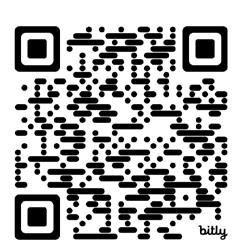
30
STUDENT MATINEE AT GEFFEN PLAYHOUSE
PHOTO BY JEFF LORCH
THEMES & TOPICS
GEFFEN PLAYHOUSE STORYTELLING WORKSHOP




MARCH 30–MAY 4, 2024
SATURDAYS 10AM–12PM @ GEFFEN PLAYHOUSE
A six-week, in-person, development series, the Geffen Playhouse Storytelling Workshop for Young Adults explores creative dramatic writing. Each in-person session invites participants to the Geffen Playhouse to expand their writing skills, discover their own unique style, and share their most authentic artistic voice. This workshop also explores the process of giving and receiving useful feedback and encourages artistic integrity.
Young Adult participants (ages 18-24) who seek to grow as creative artists will write and revise their own original work. The process will culminate in an intimate sharing of selected work for invited guests on Saturday, May 4, 2024.


NOW ACCEPTING APPLICATIONS
APPLY BY MARCH 8, 2024 — SPACE IS LIMITED!
To apply and for more information, visit geffenplayhouse.org/storytelling.

EDUCATION@GEFFENPLAYHOUSE.ORG 10886 LE CONTE AVE LOS ANGELES, CA 90024


































































